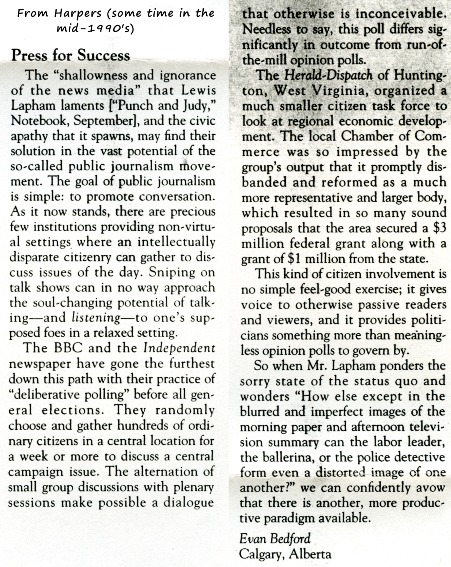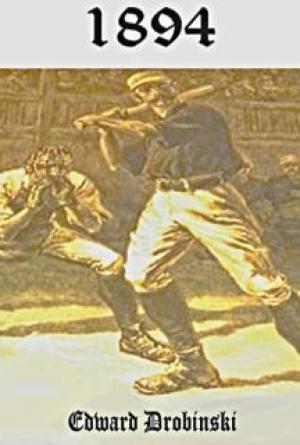an O. Henry short
story. An inflated
ego meets a source
of omniscience
wrapped up in an
old blanket. A
bunch of neurons
short-circuit. And
finally, he’s
“home”.
It struck a deep
chord with me, and
from Be Here Now,
I went to another of
174
Dass's books called Miracle of Love: stories about Neem Karoli Baba. This had the same account written in it, but there were an additional 410 pages crammed with similar accounts given by some of the hundreds of people who had come in contact with the old fellow during the decades between his birth (circa 1900) and his death in 1973. A page-turner, in other words.
To this day, if I was on a desert island, and I was only able to have one book, Miracle of Love might be my first choice. Of course, it would be competing against the Bible, a rich source of epic literature, history, morality…and gross immorality (for example, the genocide, mass rape and slavery perpetrated by Moses against the Midianites4). So how’s that for great literature? Moses versus Jesus.
Rape and genocide versus the Sermon on the Mount. Pulitzer Prize winning material, for sure.
But where does the old guy in the blanket figure in all of this?
Well, for one thing, knowing there was someone who recently walked the earth, while supposedly having powers similar to those of Christ, really had the effect of allaying any doubts I had about Christianity. It meant that perhaps Jesus was something more than just an old Jewish hippie with a trending philosophy. And that would mean that the world is not just a materialist arena for the survival of the fittest. And therefore, Ayn Rand (the old hag) should deservedly be toppled from her pedestal.
Do I know this stuff about Neem Karoli Baba? No. Do I believe it? No (more on that in a later chapter). But I think it,5 since most of those 410 pages fared quite well against my BS meter (which has always tended to work overtime, since the meter reader has a degree in science and a diploma in engineering).
I hear the sceptical gears grinding away in your head. And that's good. Scepticism is good...to a point (again, more on that in a later ⁴ Numbers, Chapter 31: http://rarebible.wordpress.com/2009/12/15/genocide-slavery-and-rape-of-the-midianites/
⁵ …possibly like Julia Roberts, Steve Jobs, and Mark Zuckerberg thought it (google their names and Neem Karoli Baba)…though that last guy on the list seemingly didn’t learn much from his pilgrimage).
175
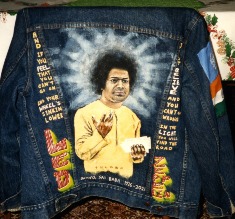
chapter). But just as an experiment, try reading all 410 pages of Miracle of Love and see if your BS meter is still registering off the charts.
But I digress. There was a problem. I was reading about NKB in the early 80's. He had already been dead for about a decade. There was no longer the option of going over there to get his "darshan" or blessing.
At about this time, however, I came across another “Baba”: Sathya Sai Baba. In appearance, Sai Baba was outrageous. Whereas NKB was just an old bald guy wrapped in a plaid blanket, Sai Baba had a huge afro and always appeared in an orange gown that was bright enough to do double duty on a construction site. He was also purported to have done miracles. But unlike NKB, there was no 410
page book, full of testimonials from many different people ; just a couple of slim hagiographies written by two devotees. But it was enough for me, since the guy was still alive.6
And he seemed quite successful. I won't bore you by recounting all of the hospitals and schools and other splendid infra-structural items that his organization has built over the decades. But suffice it to say that his reach was global, and when I was working on my Master's thesis in Edmonton, there were several hundred devotees in that city alone.
The question now became one of how
to visit India, in order to see this guy. So I quickly abandoned my previous intention
to go back to Guatemala and study the tree
nursery. Now, I would go to India with
the intention of studying the village
development program of the Sai Baba
organization. I would try to determine
whether the decision-making associated
with this program was bottom-up or top-
⁶ I'm so embarrassed that I wore that painted jean jacket (seen above) on campus for a day or two, that I’m reluctant to even show it. Once, a carload of kids drove by, and – mistaking him for Hendrix – yelled out "Jimiiiiiii!!!!
176
down. Were the peasant beneficiaries involved in the decision-making? Or were the Sai Baba folks simply in the villages to apply a cookie cutter approach to development? For it was during my grad studies that I quickly learned to appreciate the benefits of the former over the latter.
Once again, I met with my thesis committee. Stern professors tried to assess whether I was wasting my time...and theirs. One introduced me to Eric Hoffer's book, The True Believer. Hoffer looked at religious beliefs, political beliefs and all of the other isms that can degenerate into Orwellian hells. But the professor needn't have worried, since my preoccupation with Sai Baba and his wild afro was, at the time, no more intense than my preoccupation with Third World development and the substantial benefits of grass-roots participation in decision-making. Plus, I was using my own money, so academic objections at that point were, to me at least, just another pile of isms.
So I grabbed a plane ticket and packed.
On the descent into India, I felt the same unease as I did on the descent into Mexico. But instead of sultry smog, I gazed upon a million pin-pricks of light in the darkness of night as we flew over the sub-continent. From above, it felt cold, though I soon found that Bombay (not yet known as Mumbai), even at nighttime in January, was fairly warm and humid.
The airport had a distinct griminess and lack of cultural décor that left me empty. And in the one of the ubiquitous three-wheeled cabs that careened through the streets, I passed slums which stank of charcoal smoke and several other unfamiliar odors. But finally, I arrived at a clean hostel which took small sums for decent dorm beds. And in the light of morning, after a satisfying breakfast of crepes and various spicy dips (that, in total, cost the equivalent of 25
cents), I headed off to the nearest train station.
I purchased a ticket to Bangalore, but on the way to the platform, a destitute woman grasped my arm and silently pleaded. People stared. I assume that any Indian would have simply swatted her away like a fly. But I just kept walking with this embarrassing 177
appendage, and eventually she gave up. And I made up various rationalizations for not giving her anything.
In order to get to the main inter-city station, I initially took a commuter train. It was packed solid, but then more and more people pushed their way on. Eventually, when guys started clinging to the outside of the carriages, we headed off past the never-ending slums.
And as we passed through, we were often treated to the sight of other guys squatting by the tracks and defecating. No gals, though.
They were expected to hold everything until the onset of darkness.7
The only thing to be heard over the clatter of the train and the chatter of the passengers was the crisp, sweet singing of two small girls, who elbowed their way through the dense crowd, in the hope of attracting a few rupees for their efforts. They were in perfect tune, and for a rhythm section, they had large, white castanets which looked as though they had been carved out of dense chalk. Their charming melody was the only thing of beauty in this smoggy wasteland, and I hoped that they might be able to make it over to my area of the railway car, so that I could unload a few coins.
When the train arrived at Victoria Station (its architecture so grand, that it is now a UNESCO World Heritage Site), I found a ticket booth, where I snagged a second-class passage to Bangalore.
However, there was a bit of a wait, so I sat on a bench in the stale gloom (being unappreciative of architectural glory at that point in my life). Darkness then followed.
When I was finally able to board, I found an empty compartment. But it wasn’t empty for long. A raucous bunch entered, and one fellow offered me a swig from a small bottle. I declined, and I wondered if I would still have all of my belongings in the morning.
I needn't have worried. They quickly simmered down, and as we sped out of Bombay in the darkness, the cots swung out from the ⁷ …and, of course, the danger of rape, as the developed world is hearing more and more about in the news. And, as Sallie Tisdale mentions in The Magic Toilet: Providing sanitation for the world’s poor (Harper’s Magazine, June, 2015), health problems, such as kidney and bladder infections.
178
walls and each of us fell asleep, lulled by the movement of the train and either exhaustion or alcoholic stupor.
The next day, we awoke to the sights and smells of the Deccan Plateau, which wouldn't have been out of place in a 1950's Western movie: a reddish desert, punctuated by vast rock outcroppings painted in a similar hue. Settlements of any type were few and far between.
I met my traveling companions. The loud drunk from the night before turned out to be very polite and quick to offer a smile. And as luck would have it, his mother used to work in the Sai Baba ashram, so he was a good source of information. The second not-so-loud, not-so-drunk companion turned out to be equally friendly. And the third turned out to be an old man, who was probably a teetotaler. I don't remember their names, so I'll call them Tom, Dick and Harry.
Tom and Dick must've known each other, since they easily joked among themselves. Old Harry was very quiet, only speaking up to occasionally remind me that "It takes 200 drops of blood to make one drop of semen".8 Or was it 300 drops? No matter. Ancient Hindu nostrums were no match for a lifetime of intermittent ecstasy, courtesy of Hugh Hefner and Bob Guccione.
Quick stops along the way allowed vendors to hawk their goods from the railway platforms. We just opened the window and exchanges were made for items such as freshly roasted peanuts and ⁸ Obviously a reference to the Hindu belief that spiritual energy can be boosted via celibacy. But as for the math, is it 200 drops of blood or 1,600 drops of blood? The Wikipedia entry on Dhat Syndrome records "an old Hindu belief"
that it takes 40 drops of blood to make a drop of bone marrow and 40 drops of bone marrow to make a drop of semen. But that's nothing compared to what the South-Asian Scientific Specialist Centre for Sexual Health states: " 40
meals is equal to 1 drop of blood, 40 drops of blood is equal to 1 drop of bone marrow, 40 drops of BM is equal to 1 drop of semen."
(http://www.sexualhealthindia.com/lose-of-semen). Wow! Do the math.
Based on three meals per day, that's 58 years to make one drop of semen. No wonder these folks are so upset:
http://stopmasturbationnow.org/morals/how-to-spot-a-masturbator/
179
cans of pop and juice. There were also small plastic bags filled with kool-aid-like drinks, but I didn't want to push my luck.9
After about twenty hours, we reached the station nearest the ashram, where Tom and Dick and I piled into a three-wheeled cab (old Harry had left us at an earlier stop). The cab sputtered and bounced the last few miles into the town of Puttaparthi, where Sai Baba had gradually amassed not only the ashram, but an "Institute of Higher Medical Sciences", the "Sri Sathya Sai University", a huge sports stadium, and an airstrip capable of handling jumbo jets.
It was getting late in the day, so Dick and I headed over to the ashram to check in (Tom headed home, but apparently Dick wanted to tag along for a day or two with the young westerner).
At the main gate, I gave a few rupees to a beggar, even as the uniformed guard shook his head and frowned at me. Hmm. Perhaps the vast Sai organization had so many social enterprises for the poor that the stricken fellow in rags was just pretending to be something that he wasn't…or maybe it was the case that this Shangri-La was so perfect that begging was not officially recognized as an actual phenomenon.
After the check-in procedure, we headed to the male dormitory and dropped off our stuff. Then, over to one of the huge dining halls, where we gave a ticket stub for a fairly nourishing and reasonably tasty vegetarian meal. Invariably, the meals in India consisted of something wet (a vegetarian gruel) with something dry on the side to dip into the wet stuff. No cutlery, and since the food came on a huge leaf that served as a plate, there were no dishes to wash up afterward.
⁹
A much better choice was fresh coconut milk, which I later found at road-side stands. The vendor picked up a big green orb, and deftly made a couple of chops with a machete, leaving a mouth-sized hole. The milk was cool and invigorating, and after satisfying my thirst, I tossed the empty nut on to a vast pile, waiting to be harvested for its valuable fibre.
180
Everything in the dorm was well organized. We slept on rudimentary cots, and for a very small fee, we left our dirty clothes to get laundered the next day. Nobody seemed to snore, there was no alcohol inside the gates, and as soon as the time for "lights out"
arrived, I slept like a stone.
Early the next morning, we rose to the incessant cawing of hundreds of crows that had darkened one of the massive trees in the compound. The air was hazy, and it carried the spicy smell of breakfast.
After our gruel, we went out to explore the town. Surprisingly, it seemed about as crowded and grimy as any other Indian town. I guess I was expecting some of the utopian influence from Sai Baba to have filtered into the streets.
I headed over to one of the shops that specialized in batik wall hangings, thinking they would make great gifts for the folks back home (while taking up the least amount of luggage space). Dick made sure to let the shop owner know that I would be paying Indian prices, not inflated Western prices.
Back at the ashram, I prepared for the daily ritual of glimpsing –
and perhaps even being able to give a prayerful letter – to the afro'd godman in the orange gown. Dick declined. Perhaps he didn't believe in such nonsense.
I proceeded to a large outer courtyard, which was open to the scorching sun. Luckily, I had by now abandoned my western clothes for the loose-fitting white cotton which most Indians wore to ward off the heat. But it was still a matter of forming up in a dozen or two lines, and then sitting on the hard ground to wait...and wait. Finally, an old elf of a man came out, carrying a small cloth bag. It was full of scraps of paper with numbers written on them. He walked to the front of each line in turn, and stooped over so that the first fellow (gender segregation still being in effect) could gingerly reach in the bag, and slowly pull out a number. 17! Terrible! Groans went out from the rest in that line. The elf then went to the front of the next line. Another hand went in the bag and carefully drew out...a 3! A muted cheer went up. And so on.
181
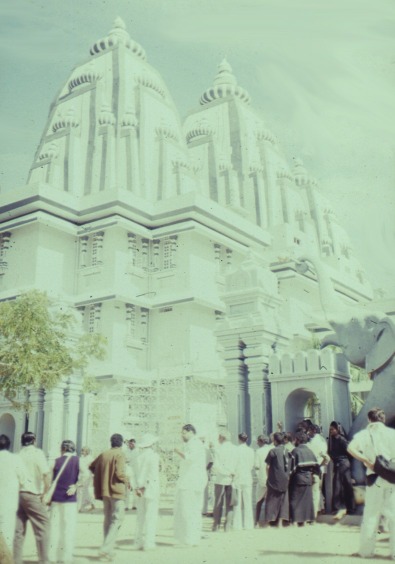
Several of the lines
consisted mainly of
sinister looking little
dudes in black pajamas.
Dick earlier told me that
they were Kali10
worshipers. As the elf
allowed the line with the
lucky number "1" to
proceed to the inner
courtyard, several of the
Kali worshipers tried to
follow unnoticed. But the
elf was neither stupid nor
lenient. He quickly ran
after them, yelling and
swatting, until they
plodded back to the line
with the inconveniently
large number on its scrap
of paper. And then the
process repeated itself with line number two – and a few more black pajamas idiotically trying to blend in at the back.
This went on for several days, during which the guys at the front of my lines invariably drew numbers which were up in the stratosphere. So we filed into the inner courtyard, but we had no chance at all to hand Sai Baba our personal letters (he could only reach so far into the crowd to grab our grubby envelopes filled with our trivial pleas).
But one day, the guy at the front of my line drew a 2! Wow! I had a chance! And sure enough, I managed to hand my envelope to ¹⁰ Kali, the consort of the god, Shiva, is described in Wikipedia as follows: "Her eyes are described as red with intoxication, and in absolute rage, her hair is shown disheveled, small fangs sometimes protrude out of her mouth, and her tongue is lolling. She is often shown naked or just wearing a skirt made of human arms and a garland of human heads. She is also accompanied by serpents and a jackal while standing on a seemingly dead Shiva..."
182
the incarnate deity. Unfortunately, as I realized later, I handed it to the godman with my left hand.11 Yikes!
But as I briefly looked into his eyes, I saw nothing. Just a guy who seemed somewhat bored with the whole proceeding. And as he handed bundle after bundle of envelopes to one of his helpers, trailing alongside, I wondered how he might have the time to read them all. And at the close of the event, I wondered why he left in a flashy new Mercedes-Benz. If he was a deity – or even if he was a very highly advanced human – surely he would have made a point of traveling in an old Toyota rust-bucket…or a bicycle. For the latter mode would have surely made a fitting statement about "moths and rust" and all the other religious injunctions against vanity and corporeal impermanence. And the highfalutin Indian fat-cats who followed him might have made some attempt to moderate their lifestyle and give a few glancing thoughts to the ninety-nine percent of the Indian populace who still struggled in the shadows.
I remembered Neem Karoli Baba, the old guy in the blanket, who mockingly asked Richard Alpert for his Land Rover. He would have seen a Mercedes not only as an encumbrance, but also as a modern Golden Calf for the gullible to prostrate themselves before.
In Alpert's book, NKB either walked the dusty roads, hitched a ride with a devotee, or traveled by rail.
Anyway, I was still going to make an attempt to study the development program, as per my thesis direction. So I made a few contacts, wrote down a few addresses, and I purchased a rail ticket to Madras (now called Chennai). Whereas Puttaparthi was a town of about 10,000, Madras was vast web of over four million souls, perched on the Bay of Bengal. I never did venture to go and see the bay, but instead went back and forth a few times to a school that taught traditional Indian dance. It was there that one of the main contacts lived.
I never managed to meet the contact, but I did retain a few memories of the big city: nearly getting flattened while jay-walking ¹¹ In Indian tradition, the left hand is impure – reserved for toilet paper duties and other necessities associated with getting filthy things slightly less filthy.
183
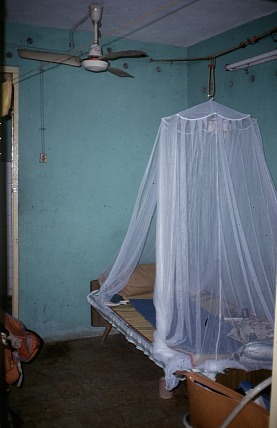
across a teeming street that seemed to have no intersections or cross-walks; reviewing mosquito bites each morning, and wondering how soon I would contract malaria; seeing a beggar lying on the sidewalk with a tumor the size and shape of a football growing out of his side; and marvelling at the sight of a destitute man and his young daughter, who were happily playing some sort of game on the sidewalk, using just a piece of chalk to draw the board and a few small stones for playing pieces.
After several pointless days, I looked at the second contact on the list. This person lived in Ooty, a "hill station" in the Western Ghats.12
I took the train out from Madras, and several hours later, it stopped at the foot of the Nilgiri Hills, where we abandoned the diesel-electric locomotive for steam power. We went higher and higher into the hills, until the grade
got so steep that the locomotive had to
pull itself up along a third middle rail
with cogs notched into it. All the
while, cinders from the burnt coal
drifted back to us through the open
windows of the carriages. We passed
tendrils of small waterfalls cascading
down from the heights above. And
higher still, there lay the rolling
carpets of tea plantations, where
women with bulging sacks hunched
over to pick leaves.
Finally, we reached Ooty. It
reminded me a bit of my earlier stay
in San Cristobal in southern Mexico:
a Third World equivalent of Banff,
but without the high-end shops or the low-end, plastic junk.
¹² A hill station is a resort town situated at higher elevations, where the colonial English went to escape the heat of the plains. The Western Ghats are the main mountain range along the western coast of India. They are not true mountains and they have an average elevation of only about 1,200 metres.
184
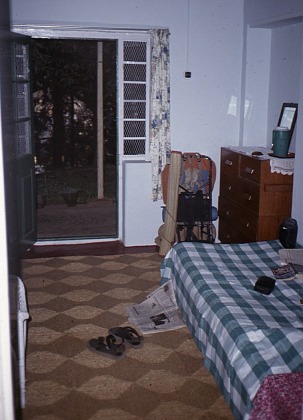
But my room that night reminded me that I was definitely not in Banff. It reminded me that I wasn’t even in San Cristobal. It was only $3 a night, but it was also just a concrete cell measuring only about 50 square feet. And it had no window.
However, the next night, I
stumbled upon some sort of
Evangelical retreat which operated
like a hotel. It also cost the
equivalent of $3. However, it was
the poster child for Victorian
opulence. Freshly laundered sheets.
A large window with a view out to
one of the local parks. A small
fireplace. Lace doilies on hardwood
furniture. And, of course, a bible in
one of the drawers.
The next morning, I took a
stroll out on the street. There wasn't
nearly the extent of poverty that I
saw in Madras and Bombay. In fact, I don't recall seeing a single beggar. There was a sadhu on the sidewalk who collected rupees in a copper bowl, but like a busker on a Calgary street, he performed a public service. He stood on one leg, while his other leg was wrapped around his neck. And his tongue protruded outwards, due to a small metal trident piercing it in a manner which seemed to defy the laws of physics.
He served a symbolic purpose, for both his matted hair and the trident were items associated with the god Shiva. A passing Hindu could derive some sort of psychological or spiritual salve by dropping a rupee or two into the bowl.
This contrasted with the beggar that I saw a few weeks earlier in Puttaparthi. His legs curled about like spaghetti, creating an image that was far more grotesque than a trident in a tongue. He would have started life normally, but at some point in childhood, his legs had been intentionally broken in several places, and forced to heal at 185
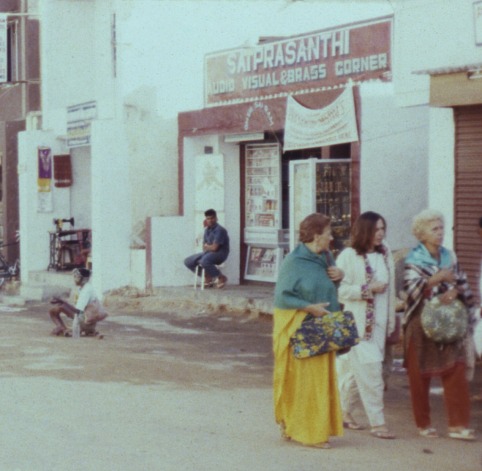
crazy angles. All
this to create a
pathetic soul
deserving some
pity and a few
rupees.
I hung around
Ooty for a couple
of weeks, since it
was far more
picturesque than
any of the other
Indian towns and
cities that I had
been in. But I still
wasn't having
much luck
contacting the
local Sai Baba
devotee. No matter. I was slowly coming to the realization that Sai Baba was just a con artist.13
I had also come to another, more fundamental realization.
Whereas before my India trip, I saw global poverty as something to be solved with a better widget or a more sustainable and productive ecological balance, I now saw the whole mess through a cultural lens. I now saw that the main reason that the Third World was so screwed up, was because its leaders were trying desperately to become just like us. And if we were still stuck in the mode of conspicuous consumption and trying to keep up with the Joneses, then their delusions were having an even tougher time butting up against the uncompromising wall of social and ecological limits.
Back at the Bombay train station, I once again saw the two little girls with the dazzling voices and the chalk castanets. They asked ¹³ And that's probably just the tip of the iceberg. Many people have accused him of sexual abuse, for instance.
http://en.wikipedia.org/wiki/Sathya_Sai_Baba#Critical_examinations 186
me for some money. But for some reason, I didn't give them anything, and to this day, I don't know why. Did I not recognize them until a split second after I had waved them away? I don’t recall. But it was another one of those unfathomable decisions that betrayed some combination of selfishness, stupidity, or just plain obliviousness.
At the time, though, I didn't dwell on it. And within a few hours, I found myself back in the grunge of the Bombay airport, waiting for a flight home.
187

chapter xv: old hymns and medieval drinking songs Throughout my formative years, I hated going to church. Even though we were far from the U.S. border (and thus there weren't any Sunday morning cartoons that I was missing), I still detested the boring moralizing that went on. The Christmas Eve service was exceptionally bad, since the church was crowded, and Mom and Dad tended to stay longer than usual after the service.
And the carols were torture. They gave me a heavy feeling in the chest. Sort of like peanut butter on white bread with nothing to drink. Oh Little Town of Bethlehem was the worst. It was musical quick-sand.
But I survived. And by my mid-teens, my parents had quit trying to drag me through the doors of McDougall United Church.
About a decade later, I was driving down Memorial Drive, listening to CBC radio, which was playing a series of medieval drinking songs. And one of them hit me like a freight train. Even though the melody was unrecognizable, something else about it resonated with a very strange intensity. I felt as though I had listened to it (or sung it) hundreds of times before.
I should have pulled over to the nearest phone booth and asked for directory assistance to CBC in Toronto. But I let the opportunity slip. A few years later, I went to the music library at the U. of C. and asked for any vinyl they might have with medieval music on it. I spent an afternoon listening to tunes, but nothing resonated like that tune I heard on Memorial Drive. A decade or so after that, I ordered CD’s from Amazon with titles like Songs From the Taverne and Songs & Dances of Medieval & Renaissance Times. But still nothing. So I suspect I might never be able to evoke that feeling again.
A few years after the Memorial Drive incident, I was in one of my favourite bookstores (Munro's in Victoria, owned by the Nobel Prize laureate). And there I spied a book called The Presence of the 188
Past. 1 It was an intriguing title, so I looked at the back cover:
"...from protein molecules to...human societies, this ground-breaking work suggests that nature operates less by fixed laws than by its own kind of memory." It had a dense, 20 page bibliography, and it was published by Random House (a respected company that tends not to publish home-spun drivel). And the author (Rupert Sheldrake) had a Phd in biochemistry from Cambridge University. So I bought a copy.
One of the things that Sheldrake emphasizes is just how little science actually knows about the fundamental elements of existence.
Like a chicken embryo in an egg, for example. You would think that scientists would have long ago figured out how the information in DNA makes a chicken wing...or a human hand or an eyeball. But it doesn't. In fact, there's a bet going on between Sheldrake and the scientific establishment (in the person of Lewis Wolpert, a biology professor from University College, London) over the issue. Wolpert has bet (and the winner will receive a case of "fine port, Quinta do Vesuvio 2005") that by May, 2029, "...given the genome [ie, genetic information] of a fertilized egg of an animal or plant, we will be able to predict in at least one case all the details of the organism that develops from it, including any abnormalities.”2 In other words, we don't presently know exactly how an egg gets to be a chick.
Sheldrake's theory, which he has been working on for more than thirty years, is that much of what mainstream science thinks is governed by mechanical and chemical forces (such as my thoughts about which words to place where in this sentence) is actually governed by fields that have formed in the past. So the way in which my brain sorts the various possible word orders in this sentence has a lot to do with how my ancient ancestor, Drog the caveman, did it after first feeling a need to place one grunt in front of another.
These fields are what enable much of life to operate in the way it does. They operate on the molecular level all the way up to the ¹ Subtitled Morphic Resonance and the Habits of Nature. 1989. New York: Vintage Books (a division of Random House).
² From: http://www.thecnj.com/review/2009/081309/feature081309_01.html 189
societal level. They provide a theoretical mechanism for how a chick forms in an egg, just as they provide one for how consciousness and memory works in a human brain.3 They also provide a mechanism for Jung's concept of the "collective unconscious" (which I described back in chapter v).
“Morphic” fields don't replace mechanical and chemical processes, just as they don't replace the cultural factors that have shaped societies over time. But they do provide a theoretical mechanism for some of the gaps which science can't explain.
For example, a massive amount of scientific research with rats and mazes was done in the 1920's in order to try and figure out how evolution worked. Was it via Darwinian selection?4 Or did Lamarckian inheritance5 provide the mechanism?
William McDougall (a psychologist at Harvard) therefore started what Sheldrake called "[t]he most thorough of all the investigations on the hereditary transmission of learning..."6 Over three decades, and many, many, many rats later, he and other researchers in other ³ …memory being another area where science is having a tough time in figuring things out. See the following quote in
http://science.howstuffworks.com/life/inside-the-mind/human-brain/human-memory.htm “This doesn't mean that scientists have figured out exactly how the system works. They still don't fully understand exactly how you remember or what occurs during recall. The search for how the brain organizes memories and where those memories are acquired and stored has been a never-ending quest among brain researchers for decades.”
⁴ Darwinian selection states that millions of years ago, some giraffes (for example) were born with slightly longer necks, and others were born with slightly shorter necks (due to random mutational variations in DNA). The ones with longer necks could more easily reach leaves on trees, and therefore had a better chance at surviving and producing offspring.
⁵ Lamarckian theory states that by stretching their necks to reach leaves, the earliest giraffes developed slightly longer necks during their lifetimes, and somehow that got passed on to future generations. The DNA dice roll supposedly had nothing at all to do with the process.
⁶ Op cit. pp. 174-175.
190
universities7 examined how it was that rats seemed to get smarter and smarter over time without any selective breeding (ie, without any scientist ensuring that superior maze-running male rats mated with superior maze-running female rats8).
The first generation of McDougall's rats were pretty dumb. On average, they each made 165 errors before they were able to get out of the maze. But by continuing (for decades) to breed the little critters and putting each generation through the maze, he found that by the 30th generation, they only made 20 mistakes on average.
Remember, he didn't do any selective breeding to make the rats smarter. In fact, in some side experiments, he bred some of the dumbest rats together to see what their offspring might do.
Darwinian theory would say that dumb rats making dumb rat babies would eventually make a rat so stupid that it would never escape the maze. But that didn't happen. Even the offspring of the idiot rats got progressively better and better at traversing the maze.
Hmm. Both the Lamarckians and the Darwinians were getting a bit nervous. This wasn't supposed to happen. So F.A.E. Crew at the University of Edinburgh decided to have a go at it.9 He obtained a totally different bunch of rats from the rat supply store. Their DNA would then represent the the totally average rat DNA. And presumably, they would start off doing the maze with about 165
errors, just like McDougall's rats started doing.
⁷ For example W.E. Agar in Melbourne, Australia: http://en.wikipedia.org/wiki/Wilfred_Eade_Agar However, Agar was a Darwinian, whereas McDougall was a Lamarckian.
⁸ Selective breeding, an artificial form of Darwinian evolution, has been the main mechanism for domesticating animals throughout history. You want a race horse? Then you get a stallion that's fast and a mare that's fast. And then you let them do what comes naturally. What Darwin was able to infer from looking at finches on the Galapagos Islands, was the same mechanism that humans had been imposing on cats and dogs and cows and horses for thousands of years: improving DNA.
⁹ Crew, F.A.E. 1936. A repetition of McDougall's Lamarckian experiment. Journal of Genetics 33: 61-101. Not seen. Cited in Sheldrake.
191

But that didn't happen either. The first generation of rats averaged just 25 errors. And some of them got through the maze without any errors at all. It made no sense to either Darwinian theory or Lamarckian theory. Unrelated rats all over the world were getting better and better at doing a particular maze. And no one could say why...except Sheldrake about a half century later.
From rats, we go to humans. More specifically, Japanese nursery rhymes.10 Sheldrake enlisted the help of a Japanese poet (Shuntaro Tanikawa) to find a rhyme that Japanese children had chanted for generations. Tanikawa then made up two other poems similar in structure and rhyming cadence to the real one – one of them with meaningful phrases and the other one just full of nonsense. So there was 1) a real, old poem, 2) a real, new poem, and 3) a new nonsense poem.
Sheldrake then got volunteer subjects with non-Japanese backgrounds to chant each of the poems a fixed number of times.
And then, a half hour later, they were tested on their memory of the verses. You would expect that, on average, each test subject would remember each poem about equally. However, Sheldrake found that 62% of the volunteers found the ancient nursery rhyme the easiest to recall (not 33%, as would have been expected).
All very interesting. But the rats and the nursery rhymes take up less than four pages in Sheldrake's book. What's in the other 400
pages or so? More of the same. Scientific evidence that science can't explain.
Stuff happened in the past (rats ran a particular maze and kids chanted a particular nursery rhyme). Morphic fields formed. And then subsequently, maze running and rhyme memorization became much easier to accomplish. Sounds crazy, yes. But back in 1935, that’s also what Einstein thought about “spooky action at a distance”.
¹⁰ Sheldrake, op cit. P.189-91
192
I’ve always watched a lot of Monty Python. One of my favourites is the sketch where the newlyweds are in a department store, buying a bed. However, they are cautioned by one of the staff that the salesman is a bit crazy. If he hears the word "mattress" he puts a paper bag over his head and goes catatonic. The only remedy is for everyone around to sing the old hymn Jerusalem. If enough join in, then he can take the bag off his head and continue to sell beds. Complete nonsense, but also insanely funny. And it also introduced me to William Blake, who wrote the lyrics to Jerusalem more than 200 years ago, as well as Sir Hubert Parry, who wrote the music more than 100 years ago. It has been called the "unofficial anthem" of England. It was made the official anthem of the England football team in the Euro 2000 competition, and it was sung at Will and Kate's wedding. Etc, etc, etc.
And it was also unceremoniously turfed from the latest edition of the United Church of Canada's hymn book for being politically incorrect. That's because it makes references to certain articles of war, such as a bow, some arrows, a spear, and a sword.11 Of course, it was all allegorical. After all, how functional would a bow be if it was made of "burning gold"? Or arrows made of "desire"? The physics don't quite work.
¹¹ And did those feet in ancient time
Walk upon England's mountain green?
And was the holy Lamb of God
On England's pleasant pastures seen?
And did the countenance divine
Shine forth upon our clouded hills?
And was Jerusalem builded here
Among those dark satanic mills?
Bring me my bow of burning gold!
Bring me my arrows of desire!
Bring me my spear! O clouds, unfold!
Bring me my chariot of fire!
I will not cease from mental fight,
Nor shall my sword sleep in my hand,
Till we have built Jerusalem
In England's green and pleasant land.
193
But I had one of the earlier U.C. hymn books at the forest fire lookout towers, where I amused myself by playing a few songs on either an alto or a soprano recorder. Iron Butterfly’s Inna-Gadda-Da-Vida worked well on the soprano instrument, but I had to use the alto recorder to reach the one really low note when Jerusalem hits the word "green".
It was in that period, not only with Jerusalem, but also with a few other old hymns, that I noticed some not-so-subtle signs of emotion welling up. And I got to thinking about the Sheldrake book that I had recently read. And then it clicked. A lot of the old hymns would have been sung millions and millions of times over the centuries. They would have built up some fairly strong morphic fields (and when I e-mailed Sheldrake about it, he certainly didn’t discount the possibility).
But why just the old hymns? Why not Beatles' songs? Or in my case, why not Led Zeppelin’s Physical Graffiti? When Dean and I haunted the neighbourhood in my old orange Vega, it was always the leading contender from the stack of grimy 8-tracks we had stuffed in the glove compartment. We played it so much in the 70’s, that I actually got sick of it, and I had to figuratively bury it in the 80’s and 90’s, only to resurrect it in the next millennium. I would’ve heard Kashmir (third track on Side 2) many, many more times than any hymn I had ever heard in church.12
But my eyes don’t well up with tears when I hear Kashmir. And even when I secretly sing13 the lyrics to Frank Zappa’s Valley Girl, it does nothing other than give me a few chuckles, whereas Jacob Neander’s exquisite little ditty Praise to the Lord, the Almighty (written in the year 1680) never fails to make me wonder where the hell that lump in my throat came from.
¹² …especially Jerusalem, which I have never heard sung in a church. The first time I had ever heard it sung would have been in the Monty Python skit (1969), and then from the movie Chariots of Fire (1981). It’s in Emerson, Lake and Palmer’s vinyl masterpiece Brain Salad Surgery (1973), but I didn’t own the album until much later in life.
¹³ (not in the shower, but in my car, and only when I’m quite sure that no one is looking)
194
Could it have something to do with the lyrics of the old hymns?
Not likely. The old hymns often bring up topics which can only be described as medieval nonsense (creation, for example…or the notion of an omniscient, omnipotent deity who stands idly by while Syrian children are gassed).
No, I've come to suspect that the big difference between Kashmir and Jerusalem is that the latter has been sung – passionately –
millions (or billions) of times in the past. And via morphic resonance, I’m benefiting from this ancient passion.14 It’s a form of time-travel/mind-meld. So, forget the bread and wine stuff. For me, the real Communion comes when I’m packed into a pew, and I’m singing (to use another particularly strong example) a 17th century musical adaptation of the 23rd Psalm15 (…uh, no, I’m not getting emotional; there’s just a cinder in my eye).
So where does quick-sand and Oh Little Town of Bethlehem re-enter the scene? I see now that the “heavy feeling” in my chest was just a suppressed urge to emote. Emotions and tears for a fourteen year old guy were supremely inconvenient, so I didn't allow them to surface. They just festered in my gut.
Something else from my childhood makes me think about the possibility of morphic resonance. I used to have a recurring nightmare whenever I caught the flu.16 I dreamt that I was hiding, and I could hear a vast army marching past. The sound of its rhythmic feet filled me with terror. And that was the extent of it.
And there was nothing in my actual childhood experience that could have come close to resembling that nightmare. I lived in a ¹⁴ I’ve found that it only works if I sing it. I can hear it on Emerson, Lake and Palmer’s Brain Salad Surgery, and there’s no reaction in my brain. I can hum along with it, and there’s still nothing. But if I sing it – or even “sing” along with it in my imagination – I can feel the resonance.
¹⁵ The Lord’s My Shepherd, composed by Jessie Seymour Irvine in 1871, while she was still in her teens.
¹⁶ Curiously, it was only when I had the flu; colds and other sicknesses had never brought it on. And I never had nightmares when I was well (dreams of being caught naked in public don't count).
195
comfortable, 1960’s, suburban setting, and the scariest experience that I had up to that point was watching the flying monkeys in The Wizard of Oz.
So was it a shred of memory from the collective unconscious of humanity? Surely, throughout history, there have been uncountable instances of individual humans being filled with terror by the sounds of massed boots marching close by.
I think it must be the strength of emotion which helps to reinforce a collective memory. Either the profound emotion of joy brought on by a favourite hymn, or the profound emotion of terror brought on by the countless wars and pogroms that have occurred throughout history.
If morphic resonance is real, then it holds immense implications for the future of the human race. It means that cultural influences can be solidified much more easily than what might be expected by mere words on a page or pixels on a video screen. Just think: due to all of the pimply faced kids shooting imaginary cops on Grand Theft Auto, there must be a fairly strong morphic field set up by now for that type of anti-social aggression. And what about all the wars in history? Have morphic fields been established for that type of real aggression? Have they been somewhat balanced by the morphic fields from all of the young men shivering with fear and disgust in foxholes? Or what about the morphic fields fostered by the countless small acts of selflessness in their cities and towns and villages back home? It's hard to say. But it is reasonable to hope that the human race can foster more and more of what Alexis de Tocqueville long ago called "habits of the heart".17 Since it is with these type of cultural and psychological assets that this fragile thing called civilization can be preserved...whether or not you happen to think that morphic resonance is real.
¹⁷ Sound familiar? It’s the title of the Bellah et al book that I quoted extensively from in chapter xi. And Bellah et al, in turn, borrowed extensively from Tocqueville’s book, Democracy in America.
196
chapter xvi: science and religion and death...and sasquatches
Belief and faith. Useless words. The concepts are important, but the associated words in the dictionary? Nope. Let's just get rid of them. We can get along just as well – if not a whole lot better – if we use the words "thought" and “conviction” instead. So, rather than saying "I believe in the resurrection of Jesus Christ", those of us who are so inclined can say "I think that Christ got resurrected". That leaves us an easier exit if evidence comes our way that is, um...inconvenient.
However, the corollary is that we also need to abolish the word
"disbelief". "Doubt" works just as well, and it's a bit easier to abandon if we – like Thomas – find a side to stick a finger in.1
But if we quit believing and start thinking, that still leaves us a few cards shy of a full deck. What we still crave is experience...and preferably a religious experience. My experience with certain old hymns and one particular medieval drinking song has led me to think that the mundane reality we see through our eyes and hear through our ears is only part of the story. Something else seems to be going on. Something that doesn't quite fit into the realm of classical physics. I think back to the LSD trip and the hydraulic excavator analogy. And the orbiting needle above the cardboard pyramid. And the "small orb of energy" mentioned in chapter iii. All totally anecdotal, but much of it mirrored by the the types of experiences related by innumerable others throughout history.
Am I grasping at straws? Perhaps. But at least I’m not grasping at thin air…like the materialist crowd would have us do, if they want to try and make sense of Einstein’s “spooky action” or McDougall’s lab rats…or a flat-lining brain accurately recalling conversations in an operating room (more on that later on in the chapter).
But back to the topic of Christianity: what is a Christian ¹ From John 20: 24-29. (“Except I shall…thrust my hand into his side [where the Roman spear pierced Jesus], I will not believe.”). Also: http://en.wikipedia.org/wiki/Doubting_Thomas 197
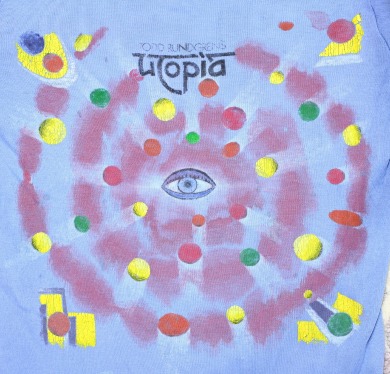
supposed to believe – I mean think? That there's a god who created stuff? Nope. Whew! Good thing, too, since that's a pretty hard one to swallow. After all, if God created the universe, then what created God? At least with the Big Bang theory, you only have to postulate something out of nothing once. And then, with 14 billion years to play around with, you have a theoretical mechanism (and a ton of evidence to back it up) for
the development of stars
and planets and life.
So no, we don’t need a
magician called God.2 My
dear old dad (with a
doctorate in theology) says
that all a Christian has to
think is that Christ got
resurrected. And based on
what I've read over the
years, I suspect that Mary
Magdalene and the
apostles sensed some sort
of punctured apparition on
the road to Galilee. In fact,
it’s significantly more difficult for me to think that the author of the earliest gospel (Mark) and the earlier material associated with the Q
Source3 just made that stuff up for a good story.
In the first place, the writings of the near-contemporary historians Tacitus (a Roman) and Josephus (a Jew who was in league ² However, for me, it does seem appropriate to postulate something similar to Jung’s Collective Unconscious, which might have evolved along with higher life forms. Even before I came across references to Jung, Dean’s sister introduced us to an exquisite Todd Rundgren album that featured this concept in a half-hour long song titled The Ikon. This complex and musically flawless album ( Utopia) would certainly be with me on my archetypal desert island .
³ Thought by most scholars to be the earliest oral tradition depicting the life of Christ, and later to be combined with the written gospel of Mark to form the gospels of Luke and Matthew. See: http://en.wikipedia.org/wiki/Q_source 198
with the Romans) confirmed the basic framework of Mark's gospel (ie, that someone called Jesus lived, made a name for himself, and was crucified at about that time).
In the second place, one has to ask why his followers would have stuck around and founded a completely new religion based on the activities of a failed apocalyptic prophet 4 who wound up being skewered on a couple of posts like a common criminal? I suspect that the disciples stuck around because even though he failed to give the Romans a damn good shit-kicking, he was a genius at composing anti-establishment parables, and he (supposedly) performed the occasional miraculous feat;5 Otherwise, they would have just gone back to fishing the next day.
And finally, we have reams and reams of 20th century material on a 20th century figure (Neem Karoli Baba) which shows – me, at least (you'll have to read the book yourself) – that the stuff of legend doesn't necessarily have to be mere legend. And legend, in the pejorative sense of the word, usually establishes itself fairly readily if you Google something, and words like "fakery" and "deception"
pop up in the hit list.
I tried such a search using "Neem Karoli Baba" combined with
"fakery", and the only relevant site that popped up was www.strippingthegurus.com (named after a book written by Geoffrey Falk). It was all very well researched, and the chapter on Sai Baba (the afro’d guy in the orange gown) confirmed what I had suspected during my trip to India. However, when it came to NKB, there was very little dirt. In fact, the worst that Falk could find ⁴ Google "failed apocalyptic prophet" for more background on that. But in a nutshell, the evidence suggests that Jesus and his followers thought that the end was near, the Romans were toast, and that the true believers would inherit some sort of kingdom in the very short term. Also Google “Jesus” and
“this generation” for the numerous Bible passages where Jesus defines the
“short term” (he may have been good at other stuff, but he was a crappy fortune teller).
⁵ And before the materialist crowd chimes in, I would ask them to cultivate a tiny morsel of humility…based on their complete inability to explain away the decades of evidence for “spooky action”.
199
consisted of three paragraphs taken verbatim from Dass's own book ( Miracle of Love).6 It was about the relationship between NKB and a female disciple, and although she looked upon it as a positive experience, obviously Falk didn't see it in the same light.
It was three paragraphs taken out of a total of 400 pages.
Actually, it was three paragraphs taken from a life which was very well known in India for most of the 20th century.7
The three paragraphs remind me of the work of Professor Bart Ehrman of the University of North Carolina. He is a religious studies scholar, who has written vast amounts on the subject of the
“historical Jesus” (meaning that which we know about Jesus via historical evidence, as opposed to belief and faith).
In his course titled The Historical Jesus, he relates three criteria8
which have helped historians to figure out which events and sayings associated with Jesus are most likely nonsense, and which are most ⁶ Actually, there were four paragraphs concerning the episode in Miracle of Love. But for whatever reason, Falk decided to leave out the forth one…perhaps because it wasn’t sensational enough? Or maybe because it helped to explain the whole puzzling episode?
⁷ …and who was widely acknowledged to be instrumental in the eradication of smallpox in India – and thus the world – simply because he said that it would be accomplished. That’s because doctors all over India, up until they heard about this pronouncement, would not help out with the vaccination campaign (they knew that it would be an impossible task). However, they also figured that since NKB seemed to be omniscient (during the Sino-Indian War of 1962, he told the nation that the invading Chinese army would call a cease-fire and retreat…which they did), maybe they should pitch in and help. For more info on this, Google “Neem Karoli Baba” and “smallpox”. The 2013
Commencement Address for the graduates of the Harvard School of Public Health (about half way down the Google page) is a particularly good read on the subject (the speaker, Larry Brilliant, currently on CNN – big time – for his expertise on the coronavirus, is also the young hippie doctor who NKB told again and again to pester the World Health Organization office in Delhi about getting the massive vaccination process started).
⁸ From lectures #9 and #10. This is another one of The Great Courses, by The Teaching Company (www.thegreatcourses.com).
200
likely factual. They are:
● Independent Attestation (ie, multiple independent witnesses or authors saying roughly the same thing)
● Criterion of Dissimilarity (ie, something that works against the vested ideology of the subject being studied – as well as the ideology of later adherents9)
● Contextual credibility (ie, an event which can plausibly be placed in the era that it was supposed to have occurred) To give an example, historians are quite certain that Jesus got crucified, since the event passes all three criteria with flying colours.
It passes the test of independent attestation, since all of the gospels, as well as the Roman historians (Tacitus and Josephus) mention it. It passes the test of contextual credibility, since the same thing happened to many, many other Jews under Roman rule. And it passes the test of dissimilarity, since the earliest Christian cheerleaders were not too pleased that their guy died like a common criminal, instead of giving those Romans a damn good thrashing!
So can we apply the same three criteria to NKB? Certainly.10 But it is the criterion of dissimilarity which I find most interesting in this case.11 And who else to provide the best example, but Geoffrey Falk ⁹ Think of it: there are two salespersons. Who are you most likely going to believe? The one that tells you that the widget for sale is absolutely flawless, and that all previous buyers are in constant orgasmic heaven? Or the one that admits that the very same widget is a fairly decent widget, but that it is made of cheap plastic, so that it can easily break if misused?
¹⁰ But I won’t delve into NKB’s purported miracles, for the same reason that Ehrman didn’t delve into the New Testament miracles: “…even if one concedes that miracles can happen, historians cannot demonstrate them.”
(From Lecture # 18). And even though there is a fair amount of film footage of NKB available on youtube, there are 1) no miracles shown, 2) the concept of miracles was always downplayed by him, and 3) when others talked about his miracles, he would often berate them (eg, “you are all talking lies!” from p.131 of Miracle of Love).
¹¹ …and independent attestation and contextual credibility aren’t nearly as 201
and www.strippingthegurus.com? After all, it is in Falk’s interest to show that NKB is a phony (with the three damning paragraphs). And it is in the interest of the disciples of NKB to show that he is not a phony. So why would the disciples of NKB include the three damning paragraphs in Miracle of Love? Probably for no other reason than that it actually occurred (as Erhman said, when he looked at some of the unflattering stuff written about Jesus in the New Testament).
And there is no shortage of unflattering – or just plain puzzling –
stuff in Miracle of Love. For example, Larry Brilliant (the hippie doctor and CNN coronavirus expert who I mentioned in a footnote a few pages back) related an incident that seemingly showed a hypocritical side of NKB. The old guy had numerous Western disciples who had taken LSD in the past (probably every single one of them), but when some other Western visitors showed up at the ashram, he accused them of also having taken LSD in the past, and he kicked them out of the ashram. Brilliant pleaded on their behalf, but to no avail. He later wrote “I don’t understand anything about that incident!”12
But even with all of this unflattering dissimilarity, the book (with hundreds of testimonies, some going back to the early part of the 20th Century) was assembled. And (get this) it was only published after NKB had first approved the final draft. He initially demanded certain specific changes (because “You are printing lies.”13). And he got those changes made in time for publication. But the passages showing clear cases of dissimilarity were obviously kept in. Maybe he knew that a historian or two would be leafing through the pages at some point in the future? Or maybe he was just really into that ancient anachronism we call truth?14
problematic for a figure who died only a few decades ago, and for whom many of the witnesses are still alive today.
¹² Miracle of Love, p.236
¹³ …about which benefactor built a particular temple ( Miracle of Love, p.200) ¹⁴ More relevant than ever in an age where “alternative facts” and “fake news”
battle against inconvenient science and the lost wisdom of Walter Cronkite.
202

“ MEN WILL HATE YOU FOR TELLING THE TRUTH.
THEY MAY EVEN KILL YOU, BUT YOU MUST TELL
THE TRUTH. IF YOU LIVE IN TRUTH, GOD WILL
ALWAYS STAND WITH YOU.”
and
“ CHRIST DIED FOR TRUTH .” 15
So, what about this thing called death? I mentioned Raymond Moody's work in an earlier chapter, with the typical white light, the tunnel, feelings of bliss, etc. It all sounds quite pleasant.
But is it real?
Ancient cultures all report something similar to the "near-death experience". Gregory Shushan studied the writings of ancient Egypt, Babylon, Vedic India, pre-Buddhist China, and pre-Columbian Mesoamerica, and found that even accounting for cultural differences, the nine main features associated with the phenomenon were all mentioned.16 But the culture most associated with the exploration of the afterlife was probably that of medieval Tibet, where much of its resources were given to the theocracy, which in turn, spent most of its days and nights meditating and venturing into other realms of consciousness. One of the results became the Tibetan Book of the Dead.
The main difference between the Tibetan Book of the Dead and the Christian view of the afterlife, is that whereas in the latter, fortunate souls pass into a realm of permanent bliss (ie, sitting on a cloud and strumming a harp), the former sees souls approaching a ¹⁵ In all-caps in the original. Both are quotes from NKB himself (from the chapter titled About Truth p.199).
¹⁶ Shushan, Gregory (2009) Conceptions of the Afterlife in Early Civilizations: Universalism, Constructivism and Near-Death Experience. New York & London, Continuum. Cited in Wikipedia: http://en.wikipedia.org/wiki/Near-death_experience#cite_note-95
203
realm of permanent bliss, but then getting drawn back down to earth to seek the process of rebirth. Only a relative few who have psychologically prepared themselves (via meditation) are able to dive head first into the ego-destroying void of the pure white light.
I'm not sure which is more enticing. Losing your entire identity, but being able to exist in a realm of bliss? Or getting reborn – possibly into a Third World slum? Or sitting on a cloud with Jesus and strumming a harp?
I sometimes wonder if the "clear light of the void” (as it is often described) is not merely a devolution of consciousness down to the sub-atomic level (related to Timothy Leary's theory about the eight circuits of consciousness mentioned in chapter iv). But I prefer to think that it is something more along the lines of the Tibetan or Christian conception of the phenomenon. Or it may be a combination of the above. Certainly, a sub-atomic awareness by itself would not explain some of the other typical aspects of the experience (as listed by IANDS17)
•Incredibly rapid, sharp thinking and observations
•Encounter with deceased loved ones, possibly sacred figures (the Judges, Jesus, a saint) or unrecognized beings, with whom communication is mind-to-mind; these figures may seem consoling, loving, or terrifying
•A life review, reliving actions and feeling their emotional impact on others
•In some cases, a flood of knowledge about life and the nature of the universe
What is certainly the case though, is that some of the attempts by some of the scientific establishment to reduce everything to neurons and photons make about as much sense as pearly gates and harps.
For example, I picked up a copy of The Spiritual Doorway in the Brain: A Neurologist's Search for the God Experience by Kevin ¹⁷ International Association for Near‐death Studies: http://iands.org/about-ndes/characteristics.html
204
Nelson, M.D. It was a fairly interesting read, but some of the mechanisms he thinks are responsible for the near-death experiences are obvious nonsense.
Take the bright light, for instance. It is invariably described by the people who have seen it as extraordinarily bright...like no other light they had ever seen in their earthly existence. For example, Renee Paraslow relates her near-death experience, when, as a child, an allergic reaction swelled her body until she went unconscious.
After the usual observance of her body and its surroundings from above, she encountered "...a sea of light...as if every atom in the universe had been electrified with colour and light..."18
But Nelson hypothesizes that the light is from the same source as that which we see during the dream state. I don't know about you, but my dreams are somewhere on the dull side of the light spectrum.
Another source of light, he figures, is that tiny bit that makes it through our closed eyelids (which would be even duller). And as for the tunnel that people talk about travelling through as they go towards the light? Nelson offers the explanation that it's just the eye's retina being starved for blood and responding by losing peripheral vision.19
So go ahead. Read a dozen or so anecdotes from people who have been pronounced clinically dead. Then read Nelson's book.
Then wonder why you spent $33.50 on it.
A much better read turned out to be Erasing Death by Sam Parnia M.D.20 He is a resuscitation specialist and researcher who regularly gets people back on their feet after they've been physiologically dead (no heartbeat, no breathing, and often no brain function) for minutes and even hours. So he's heard a lot of anecdotes from folks who have returned from the other side.
¹⁸ From: http://www.spiritualtravel.org/OBE/rparaslow.html ¹⁹ pp. 212‐213 in The Spiritual Doorway New York: Dutton. 2011.
²⁰ With Josh Young. New York: Harper Collins. 2013
205
But aside from the usual stuff, like patients recalling accurate details of surgical instruments which weren't present either before their brain decided to flat-line, or after resuscitation, he delves into the more basic physiological issues which need to be resolved before science is able to figure out what's going on. The main problem is that electrical activity in the brain ceases after about ten seconds into physiological death. So with brain functioning totally gone, people should not be able to "...report highly lucid, detailed, and chronologically accurate memories and accounts of the experience
[including]…surprisingly accurate observations…they could only have seen while out of their bodies."21 But they do.
Also very interesting was Parnia’s chapter on the AWARE study (AWAreness during REsuscitation). Twenty five medical centres throughout the world have signed up to participate in something which might provide firmer evidence that something weird is happening. At these centres, small shelves have been installed at heights of at least 6' 5", and random pictures have been placed face-up on the surfaces, so that they can only be seen by looking down at them. The theory is that when someone has a near-death experience, they might see the image as they (typically) float above their body, while watching the doctors and nurses desperately trying to bring them back. And if, after resuscitation, they recalled the image, it would provide evidence of some sort of non-physical perception.
At the time the book was published, about 4,000 cardiac arrests were noted at the participating medical centres. But of these cases, only 16% survived. And many of the events occurred in rooms without shelves, and some of the patients were discharged before they could be interviewed by the researchers. So, all in all, only two near-death-experiences were recorded. Neither of these patients saw the images on the shelves, but in the case of one of the patients, the
“visual and auditory awareness” of other events in the operating room “could be corroborated”.22
²¹ Parnia and Young. op cit. pp. 140-141
²² From the Wikipedia entry on Sam Parnia.
206
An even more remarkable book came out in 2012. Titled Proof of Heaven: A Neurosurgeon's Journey into the Afterlife, 23 it detailed Eben Alexander's struggle with a meningitis attack which left his spinal fluid so full of pus that it was off the charts. A healthy person's spinal fluid has a glucose concentration of about 80 mg/dl.
Someone with meningitis has a concentration of less than 40.
Someone on death's door is sitting at about 20. Alexander's concentration was hovering around 1. Nobody knows how he survived – least of all, the infectious disease specialist, Scott Wade M.D., who analyzed the pus, and called his recovery "miraculous".24
A couple of things set Alexander's experience apart from other accounts of after-death. The first relates to the time frame and the severity of the illness. Whereas most after-death experiences occur shortly after a heart attack or a stroke or immediately after a traffic accident, and then last for several minutes before resuscitation, Alexander's lasted six days. He was in a coma. So he had much more opportunity to explore the other side. And the resulting details that he recounts are that much more extraordinary.
The second difference is that a year after publication, another author set to work to debunk Alexander's assertions. Luke Dittrich, in Esquire magazine, implicitly accused him of making it all up in order to cash in (and deflect attention from several malpractise suits25). But he never thought to interview Dr. Wade, the guy who analyzed the pus. That was convenient, since the core of Dittrich's argument was that the coma was drug induced, rather than pus (ie, meningitis) induced.
²³ by Eben Alexander M.D. Toronto: Simon & Schuster, 2012
²⁴ Alexander, Op Cit. P.183
²⁵ On www.healthgrades.com, there is one malpractice claim and two professional reprimands listed for Alexander. However, the U.S. National Institute of Health found that neurosurgeons faced the highest rate of lawsuits of any medical field (on average, almost one suit per doctor every 5
years). http://www.ncbi.nlm.nih.gov/pmc/articles/PMC3204310/
207
Dittrich also dragged the Dalai Lama into the mess. He wrote that his holiness “[wagged] a finger at Alexander” and gave him a quick lesson on telling fibs.26 Really? Well, it's all on Youtube, so I couldn't resist having a look.27 And what I found was that Dittrich seemed to be the one who was playing fast and loose with the truth.
Have a look. It's obvious that the Dalai Lama trusted that Alexander
“truly experienced”28 what he saw and felt on the other side. But I guess if one's aim is to sell a few more Esquire magazines, then a keen sense of sight and hearing can sometimes be inconvenient.
From the somewhat superficial Esquire, we go to the very well grounded Atlantic Monthly (founded in 1857). For in it, we read Gideon Lichfield’s exceptionally balanced article titled Solving the Riddle of Near-Death Experiences. Lichfield doesn’t come to any hard-and-fast conclusions for either myself or for the confirmed sceptic. However, in his final paragraph, he quotes the renowned atheist, Susan Blackmore, who states that “…NDEs can be wonderful, life-changing experiences that shed light on the human condition and on questions of life and death.29
Confused? Think of it this way. When Trump had covid, was it best that he quickly recovered? Or would it have been better if he had slowly died with an intubation tube sticking out of his obnoxious trap? Well, in fact, neither. For he would have done the world an immense favour if he had had an NDE filled with glorious epiphanies, so that he could have then come back to apologize and tell us all what a sorry son-of-a-bitch he had been all his life.
²⁶ http://www.esquire.com/features/the‐prophet ²⁷ On Youtube, search “Dalai Lama” and “Eben Alexander” and click on the Life and After Life video. Then fast-forward to the bit between 46 and 49 minutes into the video. Alexander is seated over on the far right.
²⁸ At 46:53 into the video.
²⁹ April, 2015 edition. Page 86.
208

That’s why this stuff is so important. Even if you think that everything in this chapter is mumbo-jumbo, it’s a fact that certain experiences have the potential to change lives for the better…and therefore, potentially change society for the better. In my case, it was my first LSD trip. After that, I quit urinating in inappropriate places, puking up booze and bowing down to peer pressure. Instead, I started haunting the local public library, so I could search out books on mysticism, religion, psychology and history.
Science asks questions. Science gathers evidence. And when enough evidence emerges, a theory is formed. And on some theories, we are able to base our entire civilization for a hundred years or more. Electro-magnetic theory, for example. But that's a robust one, for which there is no shortage of evidence (your cell-phone, for example), and for which no one has yet won a Nobel Prize trying to disprove.
Consciousness, on the other hand, has a lot of competing theories. Just type "consciousness" and "theory" into Google and you'll see what I mean. On the first page, I found neuroscience theory, quantum theory, field theory, and electro-magnetic theory...plus a few others with bizarre names, and with probable origins in chic establishments that sell crystals and incense and homeopathic30 placebos.
To guard against some of the inevitable nonsense, I sometimes check out the magazine rack at our local bookstore to see what the current issues of Skeptic and Skeptical Inquirer have to say about various gullibility traps. They comment on matters ranging from creationism to homeopathy to a supposed conspiracy on the part of the U.S. government to blow up the World Trade Center. The sceptics (ie, the scientists) take a critical and entertaining look at the nonsense, and write up their thoughts in order to try and reduce the ³⁰ The bizarre notion that a substance diluted in water so many times that no molecules of it would be left, could still impart some sort of memory on to the water. See: http://en.wikipedia.org/wiki/Homeopathy 209
amount of idiocy in society. And they do such a good job of it, that I've twice subscribed to Skeptical Inquirer.
But even though I've learned a tremendous amount from the two magazines, I still have to retain a bit of my own scepticism when reading them. Take the subject of Sasquatches, for example. Now I'm fairly sure that most Sasquatch sightings – and most UFO
sightings – are either purposely faked or can be ascribed to something other than big, hairy hominids or little, green men. But sometimes the evidence is a bit harder to sweep under the rug.31
I remember, as a kid, when I first saw the famous Patterson-Gimlin footage of what was purported to be a Sasquatch. I nearly fell out of my chair. There was the initial footage with the shaky camera (I think I would have just dropped the damned thing, and then ran towards the nearest source of clean underwear). And the creature, which was about 25 metres away, looked like no other primate I had ever seen – or any Hollywood rendition of a guy in a primate suit.
I hadn't thought much about it in the intervening decades...until I saw the subject of bigfoot being featured occasionally in Skeptic and Skeptical Inquirer. Their articles tend to focus on the notion that Patterson wasn't a very honest guy, and nobody has ever found Sasquatch bones, etc. But I think they're all missing something very important. They shouldn't be trying to pick apart Patterson or ³¹ Witness the recently released report on UAP’s (ie, UFO’s) by the U.S. Office of the Director of National Intelligence. Some might scoff at the grainy images shown on 60 Minutes and other news shows. But the report mentions that most of the 144 events studied were not just based on sightings, but were also corroborated by “radar, infrared, electro-optical [sensors and] weapon seekers…”. And the behaviour of many of the UAP’s could not be explained by natural phenomena. Many could travel against the wind, “maneuver abruptly, or move at considerable speed, without discernable means of propulsion.” Some even showed “acceleration or a degree of signature management.” (Signature management, according to the report, is indicative of “Advanced Technology”.) And if you think the Russians or the Chinese are an order or two of magnitude ahead of the U.S. in military technology, then I have a bridge in Brooklyn that I’d be willing to sell you for real cheap.
210
Patterson's film. They should be trying to pick apart the Wikipedia entry on the Patterson film.
For one thing, Wikipedia entries are written by different people with different backgrounds, and at the end of the day, they have to come to some agreement about which sentence to insert or leave out of the entry, or which word to insert or leave out of any particular sentence. The result is called "inter-subjectivity", which in many areas of life not associated with fruit flies in petri dishes or rats in mazes, is about the closest we'll ever get to the truth.
Contrast that with some of the bigfoot advocates, who often have a bias. And contrast that with the Skeptic and Skeptical Inquirer editors, who might also have a bias (associated with making money by selling magazines).
In the case of the Wikipedia entry on the Patterson film, we are confronted with some interesting assertions from the likes of anthropologists and Hollywood film makers:
"I can see the muscle masses in the appropriate places...
If it is a fake, it is an extremely clever one."
"...a suited person could not mimic this [shoulder]
breadth and still have the naturalistic hand and arm motions present on the film."
"...the knee is regularly bent more than 90°, while the human leg bends less than 70°. No human has yet replicated this level lower leg lift while maintaining the smoothness, posture, and stride length (41") of the creature."
"...if Disney personnel were unable to duplicate the film, there is little likelihood that Patterson could have done so."
"...effectively rules out a man-in-a-suit explanation for the Patterson-Gimlin film without invoking an elaborate, if not inconceivable, prosthetic contrivance 211
to account for the appropriate positions and actions of wrist and elbow and finger flexion visible on the film."
Of course, the Wikipedia entry also details the arguments of the various researchers and witnesses on the other side of the issue:
"...it's a guy in a bad fur suit, sorry!"
I guess that last bit of technical analysis was enough for the folks at Skeptical Inquirer.
The real lesson, however, is that no matter what we look at, whether it’s Sasquatch, the resurrection of Christ or climate change, we have to be willing to cast aside our "beliefs" in favour of the more humble-sounding “thinks”. And then we have to be willing to look at all the evidence, whether it happens to be the behaviour of CO2 molecules in a laboratory, the “spooky action” associated with thousands of photons from a couple of ancient galaxies a billion light-years apart, or the criterion of dissimilarity as it applies to a 2,000 year old failed apocalyptic prophet.
212
chapter xvi : ottawa
As the thesis about Sai Baba and the village development program fell apart, I started to look around for other ideas. And since I was no longer hooked on Third World development, I began looking at forestry in the the First World. And that is where I came across more and more references to harvesting practices that were smaller in scale and more sustainable.
…which led me to an old guy on Vancouver Island by the name of Merve Wilkinson. He was renowned for how much quality wood he could grow on 136 acres, all the while improving the health of his tract of land, by leaving 5% of the growth (or "interest") to rot and decay on the forest floor.1 He did this by selective logging, as opposed to the predominant method of clear-cutting. And I later learned that over a period of 67 years, he had logged more than 2.5
times the original volume of wood, while at the end (he died at age 97), there remained 110% of the volume he started with.2
Inspiring, but somehow I found myself back in Alberta, where I stumbled upon a much different thesis topic: the Foothills Model Forest, in Hinton, which was industrial-scale in its operations. And it was looking for someone to help with socio-economic research.
It would be different this time, though. Now, somebody would be paying me to do research. So I couldn't very well get distracted or bored half-way through.
The research involved interviewing a wide range of people in the area on the subject of forestry. And forestry in Hinton meant Weldwood, which had a gigantic forest lease and a fairly impressive pulp mill (which gave the town its unmistakable odor of prosperity).
I had a list of about 60 people, and another list of about a dozen questions, which I wanted to ask them. I pretty much had free reign, except that I wasn't supposed to ask anyone what they thought of the ¹ Loomis, Ruth and Wilkinson, Merve in Wildwood, A Forest for the Future.
Gabriola, B.C.: Reflections Publishing, 1990. p.9
² Obituary: Eco-forester changed tone of logging debate. Victoria Times-Colonist, Sep 2, 2011. p.A2
213
prevailing forest tenure system, which had a tendency to favour the large corporations in the province. I talked to a Weldwood silviculture expert, a union leader, an environmentalist, a trapper, a church leader, a worker at a women's shelter, a big game hunter, a log house builder, an ancient fellow who had been in the area for many decades, a young guy who raced ATV's, and a lot of other folks who were somehow dependent upon the long-term health of the community.
I stayed at the local hotel on the main drag, and the manager thoughtfully placed me at the end furthest from the nightly racket coming from the bar. And it was in this small cubicle with a bathroom down the hallway and with a small window that looked out towards the snow-capped Rockies that I read book after book in the evenings, trying to figure out exactly what the word
"sustainability" meant.
In years previous, I had been reading a lot about climate change, and I still had a huge interest in agroforestry. But now I was delving more and more into the social sciences. Now it was the previously mundane matters of community and dialogue that started to grab my attention. I began to realize that all of the gee-whiz technological advances in the universe could never stop us from dehumanizing each other at the local level, spouting ideology at each other at the national level, and killing each other at the global level.
As luck would have it, I travelled to Victoria that Christmas to see my folks, and while there, I again stopped in at Munro's bookstore, where I came across another idiosyncratic book that I likely wouldn't have found anywhere else. It was a slight paperback from Carleton University Press with a relatively unimaginative title: Changing Maps: Governing in a World of Rapid Change. The back cover had the usual effusive praise, but it was from very obscure figures, such as the Secretary of the Treasury Board, the President of the Public Service Commission, and the former Clerk of the Privy Council…z-z-z-z-z-z.
But when I opened it up and looked at the table of contents, I saw intriguing chapter headings, as well as a couple of names that I did recognize: Amitai Etzioni, founder of the communitarian 214
movement, and Daniel Yankelovich, the go-to guy on matters of public opinion and deliberative democracy. And when I sampled a random paragraph or two, I found that the book was – wait for it –
very readable. I mean a total absence of academic jargon. It even had some cool nautical symbols for the various futures that humanity might be headed toward. Would civilization end up being like the fractious HMS Bounty? Or perhaps the energy efficient windjammer? How about the high-tech starship? Or would we ultimately follow the path of the Titanic?3
So I read it. And I found it to be the only book4 which extensively delved into both elements of what my research had shown to be the main prerequisites for a sustainable future: communitarianism5 and deliberative democracy.6
Just like Guatemala, India and Vancouver Island, I never finished the research in Hinton. Partly, it was due to a nine month wait between being told that there was some research that needed to be done, and then being told that I could go and do it. Partly, it was due to the fact that I had bumped into the end of the five year time limit for graduate research. And partly, I had simply had enough of ³ The Titanic section is eerily prescient. It warns “As the social fabric continues to fray, there is an increase in racial and regional scapegoating, and extremist groups gain adherents.” And then “Demagogues emerge preaching simplistic solutions.”
⁴ Even to this day, a quarter of a century later, I have yet to stumble upon a book that so eloquently explains the precise reasons that our civilization is so thoroughly messed up. The recent Too Dumb for Democracy by David Moscrop is a serious contender for the title, but Moscrop is just one person, whereas Changing Maps had input from at least fourteen brilliant intellects.
⁵ The philosophy which states that community responsibilities are just as important as individual rights.
⁶ The philosophy that states that in order for democracy to function properly, it needs citizens who are aware of more than just tonight's TV line-up, and in order for citizens to attain that level of awareness, dialogue and grassroots power need to become the order of the day. However, it also warns that grassroots power without dialogue is the perfect recipe for nightmarish scenarios associated with demagogues like Donald Trump .
215
university. It had been a truly amazing time, but as a solid decade of it rolled by, I started to look for the nearest exit.
I became obsessed with Changing Maps. I called up people in the media to tell them about it. After all, this was a book which advocated revolutionary changes in the process of governance, and yet one of the contributors to the book (Marcel Massé) was a cabinet minister under the then-current government of Jean Chretien. Surely that was news...wasn't it?
Apparently not. I don’t know whether it was the message or the messenger, but nobody was interested. Finally, at some point, I called the local CBC affiliate and told them that I was several days into a hunger strike, trying to get some coverage for the book. I was simply told that they would "do their best not to cover the story".
Hmm. I propped myself up on the bed in the tiny room that I was renting. What to do?
Then my eyes rested on the old 15-speed Norco Magnum bicycle that I had once used to circumnavigate the Glenmore Reservoir each day. It was about 15 years old, and it rested in pieces at the foot of my bed. But it was free of mechanical issues, and it was reinforced in just the right spots for it to be a competent, long-distance touring bike. So I decided I would cycle to Ottawa in a quest to give a copy of the book to Jean Chretien. I called up CBC to let them know my change of plans, and I was told to let them know when I got closer to Ottawa...
edmonton to regina (october, 1996)
I made this crazy resolution shortly after I had returned from one of the lookout towers, so I once again packed and heaved my worldly possessions into the tiny storage locker where they had just come from. I said good-bye to my landlady, and I headed with the bike and some camping gear to a friend’s house on the outskirts of Sherwood Park, where I was able to park my car. Then I stuffed the gear into the panniers and started pedaling north to Highway 16.
It was a grey day. The sky was grey and my mood was grey. I 216
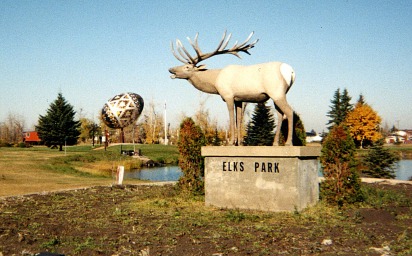
pondered various unknowns. How long might it take? Could I even do it? The drudgery ahead was difficult to contemplate. I had cycled long distances before, but on those times, I could easily stop and find the nearest bus station. However, this time, I was going for a cause.
So defeat was a bit more difficult to contemplate.
I nearly took my first spill as I headed east along 16. It was on the descent of a significant grade and the front end of the bike was so heavily loaded that the handlebar started to vibrate in a vicious feedback cycle. In the motorcycle world, it would have been referred to as a "tank slapper". But I managed to get the beast under control, and after I came to a stop, I shifted some light stuff to the front, and some heavy stuff to the back. Calamity averted.
That evening, I arrived at Mundare...or did I? It was 25 years ago, and one of my big mistakes on the trip was not keeping a diary.7
So, as I write, I have to rely on hazy memories, various photos that I took, the average distance I would have been able to cycle each day, and some simple detective work. I see that I took a photo in broad daylight of the Vegreville egg. I couldn't have cycled that far in one day from Sherwood Park, so that means my hazy memory of Mundare must be correct.
I remember eating at
a cheap Chinese
restaurant (seemingly
left over from the days
of W.O. Mitchell), and
then pitching a small
overhang of plastic tarp
behind a hedge in a
secluded park. Under the
tarp, I had the old bivy
sack that I used on my trip to Berkeley 17 years earlier. But since it was October, and I didn't have to worry about mosquitoes, I had the ⁷ What I should have done was made arrangements with the CBC station to mail them regular updates (and any quirky observations which might have been of interest to their listeners). But at least I took along a disposable camera.
217
luxury of leaving open the netting part of the sack. It was colder that way, but at least I could breath.
When dawn broke, I shook the frost off the tarp and bivy, and looked around for a spot to eat. Breakfast invariably consisted of immense amounts of fat and protein at whatever truck stop was handy. Bacon and eggs, and toast slathered with peanut butter and jam were the usual delicacies chosen from the menu. Then, to burn off those calories, I wound my way through a succession of small villages that sounded like they had been transplanted from Scotland: Ranfurly, Innisfree, Kitscoty.
Over the border into Saskatchewan, and I was in for a rude awakening. In fact, as I went from province to province eastbound, the roads got progressively worse – especially for a cyclist. Either four lanes went to two, or a paved shoulder went to gravel, or a 10
foot wide shoulder became a 1 foot wide shoulder, or all of the above. So I spent less time thinking about my aching wrists and more time glancing in my rear view mirror.
The third night was spent in the middle of an undeveloped road allowance about a hundred yards off the highway. Trees had colonized both sides of the right-of-way, so I had a bit of privacy, and I curled up in the bivy on what might have been a rough trail in earlier decades.
It was another cold night, and I contemplated the trade-off between the lighter bivy sack and the heavier pup-tent (sitting back in the Edmonton storage locker), as well as the extra pound or two associated with an insulated outer shell for the sleeping bag. And the next day, it wasn't until mid-morning before my hands started to warm up. Neoprene gloves covered by fingerless leather work gloves didn't seem to be working too well.
It was in North Battleford the next night, where the bitter cold at the local campsite took its toll on my optimism. But there was sunshine the next morning, and I lingered on a mug of cocoa at McDonalds. And even those pathetic little egg and bacon concoctions tasted like they had just come out of the kitchen at the Waldorf Astoria.
218

The going was good all the way to Saskatoon, where I splurged and got a room at the local hostel. Technically, it was a hostel, but technically, it was also an old inner city hotel with common washrooms down the hall and head throbbing "music" that didn't quit until after midnight. But at least I wasn't shivering.
In the morning, I pointed myself in
a somewhat southerly direction. First,
across one of the many bridges over
the South Saskatchewan River, and
then through some suburbs to Highway
11, where Regina beckoned. There was
no sun, and there was a fairly stiff
headwind. And as I wandered into one
of the gas stations along the highway, I
had to wonder what I'd say if someone
were to offer me a ride. But that choice
didn't come up.
I wasn't cold. Burning through a fat-laden breakfast meant that I had to expose a bit of skin so that I wouldn't perspire. But the incessant headwind made things miserable. And the word
"drudgery" often came to mind.
But later in the afternoon, the wind died down, and I started to make better time. I even started to enjoy the scenery – if interesting signage can be defined as scenery. One of them said “Findlater 1”.
And sure enough, 1 km later, I did find Findlater. But I didn't find a hotel – even though the hour was getting late. Another 17 km's to Bethune, and according to the map symbol, it might have had a population of as much as 500...and a hotel. But no luck there. A warm bath was in order, but now it was starting to get dark. I had a small flashing red light that I attached to the back of my helmet, but it was designed for the relatively slow speeds in the cities. Vehicles whizzing past at well over 100 kph wouldn't have seen it until I made some sort of a splat on a windshield.
At my wit's end, I cycled another 26 km's to Lumsden. By now, I had cycled 227 km's in one day – likely a personal best. The stars were out, but still not a hotel or motel to be seen. I asked a passerby, 219
and he confirmed the situation. But he mentioned that there was a Franciscan retreat just down the road. They might take me in.
So, after ten minutes along a moonlit lane, I knocked on the door of a large, single story building. And someone let me in. He didn’t look like a monk, but he kindly ushered me into a vast, silent kitchen (reminiscent of Kubrick’s The Shining) and showed me a fridge full of food. Before he left, he pointed out a door down the hallway where I was to stay.
There was one other person in the kitchen, and so I smiled and said hello. I only received a smile back, so he must have been under a vow of silence (though he didn’t look like a monk, either).
The next morning, I left a twenty dollar bill on the pillow, and I mentioned to my host that I had only used my sleeping bag (so they wouldn't have to wash the sheets). Then I resumed cycling in the crisp fall air, alongside the prairie grasses that would shortly be covered with a blanket of snow.
After an hour or so, I found myself in the middle of Regina. And unlike in Saskatoon, the hostel was actually an accredited youth hostel (in this case, a large, historic house that had been renovated).
So I spent a lazy evening in warm comfort.
But that was it for 1996. I would have to continue the journey the following year, since I didn't have deep enough pockets for hotels and hostels on a regular basis, and I didn't want to find myself featured on the evening news as a victim of hypothermia. So the next day, I scrounged around for a big cardboard box, partially disassembled the bike, and hopped on a Greyhound back to Edmonton.
regina to thunder bay (april, 1997)
I spent the rest of the winter at my parents' place in Victoria, where I assembled a pamphlet comprising some of the juiciest quotes from Changing Maps. It also included a letter that I managed to get printed in the Globe and Mail, praising the book. I decided that even if my weight allowance on the bike ruled out bringing the 220
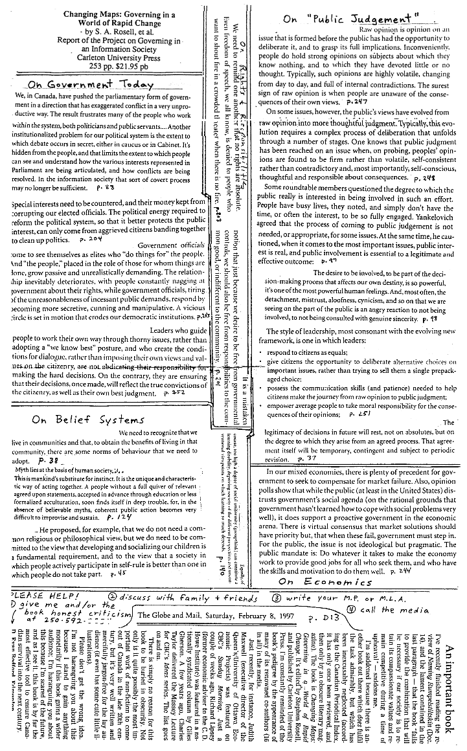
221
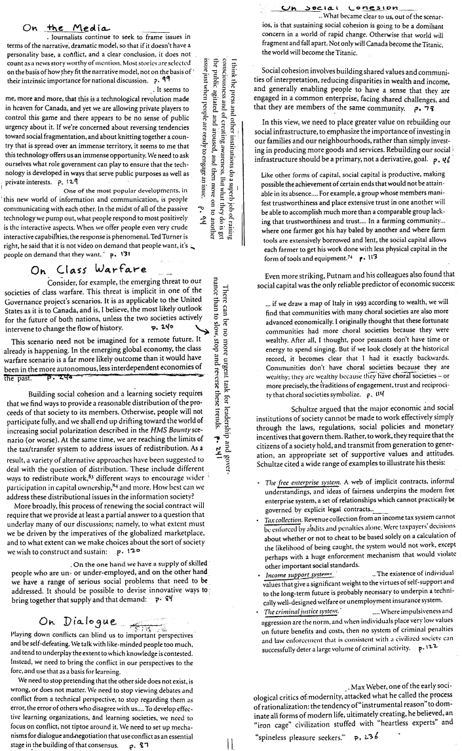
222
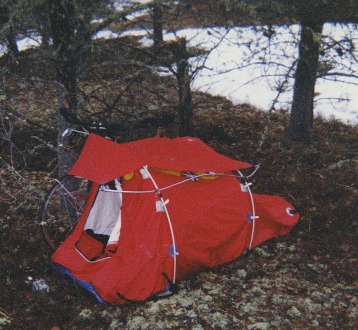
book along, I could at least bring some of its better quotes.
I also thought long and hard about my camping gear, since a bivy sack and a tarp weren't going to cut it in the frigid weather. I had a really good quality, 3-season tent, but it was heavy. And I was also concerned about the security of my bike. So I reasoned that if I used the bike as part of a tent frame – which I would design – then I'd be ahead on both counts. I'd have a lighter tent, as well as fewer worries about the bike wandering off.
So I spent a solid month
on Mom's sewing machine.
Most of the material was
waterproof, but there was
breathable material up top,
covered by a rain fly. It
wasn’t quite breathable
enough though, as I later
found out from the constant
battle with condensation and
dripping. However, it was
still a huge improvement over
the tarp and bivy sack.
Another improvement was
a set of bolt-on handlebar extensions. This not only allowed me to hunch down out of the wind, but it also allowed the weight of my upper body to rest on my forearms, and not on my wrists. So, drudgery? Yup, still there. But pain, not quite so much.
Due to the fact that my yearly fire tower stints were all plunked right in the middle of prime cycling season (May to September), I had very short windows of opportunity when I could continue the trek eastward. So it was mid-April when I loaded up the rusty Nissan with the bike and camping gear, and headed back to Regina. There, I found an RV storage yard on the outskirts of the city, where the Nissan was allotted a patch of ground, and the Norco once again hit the asphalt.
It was probably on the first or second day when I noticed a small 223
figure a mile or two ahead. After a while, I had gained on it enough to see that it was another cyclist. Not too much longer, and I was able to pull up alongside. And then I noticed why I had gained distance so easily. The fellow was riding an old mountain bike with a chain that squeaked. And he was a decade or two older and a few pounds heavier than me. He had been cycling from BC and was on his way to Ontario, where his parents had recently died. He barely had a few nickels to rub together, and this was supposedly cheaper than taking the Greyhound. But he was stoic, and he rejoiced in the fact that the prevailing winds were from the west.
He was subsisting to a certain extent on charity, but he obviously wasn't a con-artist. I had run across a few of those, and they're very averse to any sort of exertion...especially when nobody's watching.
So I gave him a few bucks, wished him luck, and pedaled on ahead.
Maybe it was Wolseley. Maybe it was Moosomin. All I remember is that there was a campsite just off the highway, by a dip in the road. Maybe there was a culvert. Maybe a small bridge. But a small stream, which normally would have been just an indentation in the geography surrounded by a few trees, now looked more like a lake. The campsite was closed, and a few of the sites were already under water, but I snuck in anyway, and found a higher area to pitch my tent.
It got progressively colder the next day, and snow started to fall.
By evening, it was apparent that if I chose to camp out (even with a 3-season bag) I'd be shivering most of the night. And the following morning, with an icy road shoulder, I wouldn’t have gone more than ten yards without crashing. So I found a motel by the highway, and hauled my bike into the room. And the next few days I found myself propped up in bed watching much more of the Weather Network than I ever had previously or since.
Finally, the weather broke, the ice on the shoulder melted, and I ventured out again. I passed a spot where a semi-truck and trailer lay stranded in the ditch, and I later found out that a young boy had been trapped under the truck for several hours. He was trying to help another vehicle out of the ditch, when the truck plowed into him, dragging him forward into a potentially icy grave. But he survived.
224
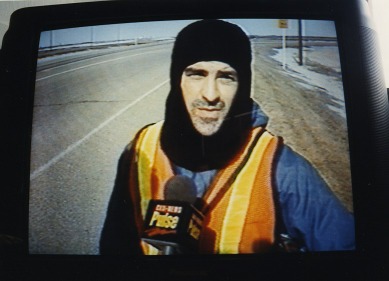
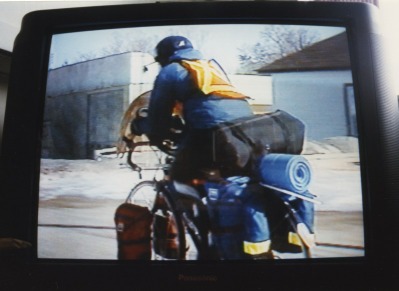
Somewhere west of Brandon, I pulled into a roadside diner to load up on fats and carbs. The owner asked me what I was doing, and so I gave her one of the photocopied sheets with the quotes from Changing Maps on it. She plied me with a few more questions, and then asked if I had contacted the media at all. I replied “no”, and thought nothing more of it.
But soon after I got on the road again, a small car pulled over on to the shoulder, just ahead of me. It was decked out in media colours, and one of the
occupants hopped out,
flagged me down, and
asked if we could chat.
I don't remember what
the questions were, and
once again, I regretted not
having the book along
with me (but apparently
not enough, since I never
brought it along on future
legs of the journey,
either).
Later that day, I
pulled into Brandon and
stayed at a Youth Hostel
(another real one). And
the following morning, I
stopped in at CKX-TV,
where they kindly gave
me a videotape of the
interview (which, in later years, I somehow managed to tape over with re-runs of The Simpsons).
Then, it was on to Portage La Prairie, where snow in the ditches gave way to standing water in the ditches, and where I started to hear 225
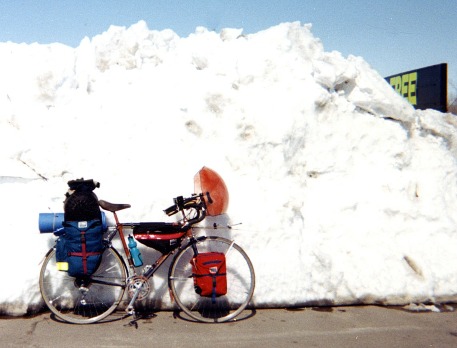
about the historic
flooding that was
soon to hit southern
Manitoba.8 I got a
shot of my bike
leaning against a
veritable mountain
of snow in the
parking lot of the
local big-box store,
and then I retired to
a rather crusty room
in an old hotel in
the middle of town.
It was somewhere between Portage and Winnipeg that I started getting sharp pains shooting up my left leg. I had no idea what it was, but I soon found out that it was related to the tucked-in position that the handlebar extensions allowed me to use. If I pedaled with a more upright stance, with my hands gripping the top of the handlebar, the pain mostly went away. So I went back to sore wrists and brick-like aerodynamics.
The streets of Winnipeg were wet and mucky. But thanks to Duff's Ditch,9 I wasn't waist deep in water.
Once again, I found a youth hostel. Clean, friendly, and a lot warmer than a tent. But instead of just an overnighter, I decided to stay a few days, since I wanted to relax and check out Winnipeg. But above all, I wanted to hang out at the public library in order to find out why my leg was hurting so much.
And find out, I did. I had developed a case of sciatica.
⁸ It was the worst flooding that the Red River had seen since 1826. In Canada alone, it spread over nearly 100 square miles of formerly dry land, and it became known as the "Red Sea".
⁹ The Red River Floodway, built in 1968 and capable of diverting 2,550 cubic metres of water per second around the city instead of through it. See: http://en.wikipedia.org/wiki/Red_River_Floodway 226
I also found something else: books on bicycles that mentioned a contraption called a recumbent, where the rider sits back in a relaxed position, in what looks like a lawn chair on wheels. Even just gazing at images of these folks sprawled out in such a restful fashion put me in a better mood. I knew that even if I'd be out the next morning on the torture device, come next fall, I'd have a smile on my face, and I'd be pedaling a “bent”.
I headed east again. The typical prairie scenery ended, and I was into rolling hills and pine forests. And for the first time since central Saskatchewan, I was back into the tenting mode. The days weren't warm, but at least I wasn't battling the bitter cold any more.
I was somewhat despondent. The threat of a sciatica flare-up was always there, and the road was more lonely. There were no longer any of the little prairie towns every fifteen kilometres to break the monotony, and I started to feel unsure of the reasons why I was doing what I was doing. That night, struggling with the paltry glow of a candle lantern, I wrote a letter to Peter Gzowski's Morningside, asking if they would consider letting Canadians know what I was doing and why. I didn’t hear anything back, so maybe I should’ve just saved the ink – or written to my contact at CBC Edmonton –
duh!
From the sandy soil and the pines of eastern Manitoba, I came to the Precambrian Shield of Ontario, with its bare rocks and its small, picturesque lakes. I also came to fear its roads. Whereas before, I at least had either a full gravel shoulder or the knowledge that a vehicle coming up behind me had two lanes to manoeuvre in, I was now in the land of practically no shoulder and single lane traffic. If there was a big truck coming up behind me, and if there was another coming in the opposite direction, I had a bit of praying to do.
Usually, they had enough sense to slow down a bit, but whenever any of them came up behind me, I kept one wary eye on my rear view mirror and another on potential escape routes into the ditch.
Kenora. Dryden. Now, I only have vague memories of rocky landscapes filled with lakes. But at Ignace, Ontario, I recall that there was forest fire tower that had been fixed up for visitors. It was still closed for the off-season, but within spitting distance there was 227
a secluded patch of trees where I set up for the night. It was still cool, however, and vestiges of snow and sloppy ice lay about. So I yearned for the warmth of the following day.
In the morning, I loaded up on greasy protein and headed out. It was a glorious day. Not too cool and not too warm. But it was about 60 kilometres to the next dot on the map (English River). So along with the hefty breakfast and the small stash of granola I had in the panniers, I needed to make good time.
I got there around noon, but I found out that the dot on the map signified little more than a seasonal motel...which hadn't opened yet.
And the next dot on the map was another 40 or 50 kilometres away.
And I was ravenous.
But there was a vehicle in the parking lot. And it belonged to a guy who just happened to be cleaning the place up in preparation for the summer season. Luckily, he took pity on me, and guided me over to the kitchen. Canned soup and bologna sandwiches had never tasted so good, and once again, I felt as though I was dining in the Waldorf Astoria.
The following morning was even warmer than the day before, and I knew I was on the home stretch. I would be in Thunder Bay that afternoon, and since it was situated on Lake Superior, I also knew that there would be more down-hill coasting than up-hill grinds.
It was the end of another leg of the journey. When I arrived, I once again dismantled the bike, wrapped it up snugly in cardboard and packing tape, and hopped on the next bus west. It was time to make a bit more cash on one of the towers.
sault ste marie to ottawa (september 1997)
The following September, I bought a shiny new recumbent. It was a few pounds heavier than the old wedgie,10 but the reclining ¹⁰ …as bent riders snidely refer to normal bikes, referring to the same bullying tactic that I mentioned back in chapter i (in this case, when a bicycle seat is trying to wedge itself between the victim’s bum cheeks).
228
position brought with it significantly better aerodynamics. In fact, the only reason you don't see such machines in the Tour de France is that back in 1934, wedgie manufacturers pressured the Union Cycliste Internationale to outlaw them.11 However, today all of the world speed records are dominated by riders using recumbents.
I had to modify the tent I designed, so it would attach to the new bike, but the panniers and everything else from the old bike fitted just fine. And sciatica was no longer a threat. Sore wrists were gone.
My aching neck no longer ached. And the inflamed area that wedgies were famous for inflaming, now felt perfectly normal. My daily tours would no longer be synonymous with drudgery and pain.
So I tossed the bike in the back of the Nissan, and headed east again. But I didn't stop at Thunder Bay. I had been following a Canadian bike touring manual, and it specifically warned against anyone trying to tour across the north shore of Lake Superior.
Traffic was simply too heavy and the road was too narrow. So I went straight through to Sault Ste Marie, where I paid for a spot to park the truck for a few weeks.
Unlike the first leg, when I didn't get away until October, and unlike the second leg, when I had to battle an April full of snow and ice, I was now in a balmy September. The leaves were turning colour and there wasn't a cloud in the sky. I now also had the occasional luxury of choosing alternate routes. Upon reaching a dot on the map called Echo Bay, I had the choice of taking the busy Trans Canada or the secondary highway known as 638. I chose the latter, even though it didn't look as straight on the map. Nor was it.
A lot of meanders, and a ton of little up-hill grinds and down-hill dashes.
¹¹ From Wikipedia's entry on the recumbent bicycle: "On 7 July 1933, at a Paris velodrome, Faure rode a modified Vélo-Velocar [ie, recumbent] 45.055 km in one hour, beating an almost 20-year-old hour record…" And “On 1 April 1934, the UCI published a new definition of a racing bicycle that specified how high the bottom bracket could be above the ground, how far it could be in front of the seat and how close it could be to the front wheel.”…effectively banning recumbents.
229
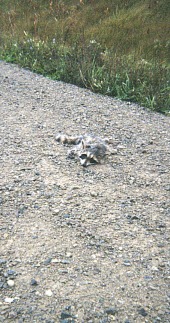
As the sun started to drop, I noticed a small cemetery on the side of the road. And being that it was a fairly peaceful road and an even more peaceful looking cemetery, I went through the gate and sat on a bench. And it occurred to me that this would be an ideal place to set up the tent. I'd wait until dusk, and I'd pitch the tent just behind a few trees in the corner. Nobody would be the wiser. No campfire.
No garbage. Nothing left behind except a few bent blades of grass.
And the peace of the dead to keep me company.
The next day was glorious. Gently rolling hills through small farms and woodlots filled with fall colours. Traffic was minimal to non-existent.
But then the road met up with the Trans Canada again. Heavier traffic, but at least the shoulder was more substantial than it had been in western Ontario. And since there were many more small towns along the route, the speed limits were often reduced. There was also more variety to meet the eye: small shops, cafe's, pedestrians, and occasionally the Mississagi River just a stone's throw from the shoulder.
I remember later that day, I camped by some rapids. Was it the so-called Mississagi Falls? A quarter-century has elapsed, and as I scroll along the route with a satellite view (courtesy of Google Maps), some things make sense. Some things become more confusing. And some things will always be a blank. So, one day in the not-too-distant future, I'll have to cycle the whole route again in order to rekindle a few lost memories…and, of course, make an attempt to give a copy of Changing Maps to whoever happens to be in 24 Sussex Drive at the time.
After a night in Espanola (after having asked someone if $10 would suffice for pitching my tent on their land), I headed south toward
Manitoulin Island. But the sky got darker and darker until there was a constant rain. A rolling landscape, which would have been beautiful on a better day, now had the greyness of drudgery. A long-dead raccoon blended in with the gravelly 230


shoulder. And somewhere along
the way, I caught a cold.
But later in the day, the sun
broke through and it started to
warm my bones and my spirit.
The island was now beautiful...even if it did produce another dead racoon. And that evening, I found another cemetery.
The following day was perfect. I pedalled up over the highest point of land, and then down toward the ferry that would take me across the Great Lake and on to the Bruce Peninsula.
On the boat, I met
an older couple who
took an interest in my
journey. The fellow
had written a book on
some aspect of
sustainability, so he
promised to mail me a
copy when he got
home. Which he did.
And – ungrateful
wretch that I am – I never wrote back to thank him. On top of that, I offloaded the book on my next foray to the used book store, so I don't even remember his name...or precisely what he wrote about.
South of Tobermory, I spent the night in a pine forest, listening to distant thunder. And when the violent winds and rain came through, I thanked providence that pine trees (as opposed to spruce) were known for their deep taproots.
In Meaford, I found a large, gated cemetery with opening and closing times posted on the gate. There were a few folks wandering around, so, until the arrival of dusk, I pushed the bike around and looked at old gravestones. And then I found a remote corner in amongst the trees.
From Meaford to Collingwood, I took the only true bike trail (an 231
old rail bed) that I happened upon during the long journey. A large part of it was just a cinder track, so I was going a bit slower than I would have been out on the road. But the surrounding trees formed a quiet, comfortable cocoon, and it turned out to be one of the most pleasant parts of the trip.
Next was Orillia (which I only recall because I was familiar with its most famous son, the humorist Stephen Leacock). And from there eastward, I followed the secondary highways as much as possible.
It was warm in the daytime. Easily warm enough to break a sweat. And I hadn't had a shower in days, so I was quite pungent.
Somewhere between Furnace Falls and Khartum, I came upon an elegant German-style restaurant nestled in a forest (I half-expected to see Hansel and Gretel sampling the building to see if it was made of ginger-bread). Luckily, it was fairly empty, and the hostess, barely concealing a grimace, seated me in a remote corner. I gobbled down a couple of slices of apple pie and ice cream, and then somewhat full, ambled back out to the bike and continued on down the road.
When it was time to bed down for the night, I found a spot in a wooded area, not far off of the road. But before I wriggled into the sleeping bag, I knew that I desperately needed a shower...or a bath...or something. I had two water bottles on the bike. I had to save the larger one for drinking, but the smaller one had about half a litre of water which I could use. So I stripped down and had an abbreviated version of an army shower: one cup of water to get wet, and one cup of water to rinse off the soap. I initially didn't think it was possible, but my scepticism vanished just as surely as the grime.
And I slept that night in supreme luxury.
A day or two after that, I hit the back-roads of the Ottawa River valley, where the trees were showing off their finest fall colours.
And after a night in a gravel pit somewhere west of Kanata, I spent the morning cycling into the nation’s capital. Sightseeing wasn’t on the agenda, so I merely got myself oriented, and then I spent a night in a cell in the Ottawa Jail.
232
Really. The youth hostel occupies the imposing old building in which Patrick Whelan was hung in 1869. He was strung up for the only political assassination at the federal level in Canadian history.
Seen by many as a scapegoat, his ghost is reputed to haunt the place.
However, the only bothersome soul I met there was a drunken Quebecois who occupied the next bunk, and who delighted in loudly muttering the oath "tabarnac" well into the early hours of the morning.
Months before, I met Dr. Keith Martin, the MP for Esquimalt-Jaun de Fuca (Reform Party), primarily due to the fact that his columns in the Victoria Times-Colonist talked about the same democratic deficit that Changing Maps did. In one column,12 he wrote that our system of governance "more closely represents a medieval fiefdom than a democracy" and that "if President Bill Clinton had the power of our prime minister, he would be doing cartwheels down the White House lawn." So, before I headed out to Sault Ste Marie, I gave him a copy of Changing Maps and he wished me luck on the journey.
The morning after my stint in jail, I phoned him and updated him on my progress. He congratulated me, but he was unsure as to what advice he could give me. Obviously, the lack of media attention meant that it would be relatively meaningless for me to give a copy of the book to Chretien...or more likely to a bored secretary somewhere in the bowels of the House of Commons. He suggested that I contact Stephan Dion, who at that time, was the Minister for Intergovernmental Affairs. I didn't say anything over the phone, but I was unsure as to how relevant intergovernmental affairs was to matters such as deliberative democracy and social capital. So I never did contact Dion's office.
The fellow I was after was Marcel Massé, one of the contributors to Changing Maps, and then the President of the Treasury Board, as well as the Minister responsible for Infrastructure. But although I stopped by his office a couple of times, and his staff tried to be helpful, I never did manage to talk to him.
¹²
The House of Illusions, p.A17 (November 6, 1997) 233
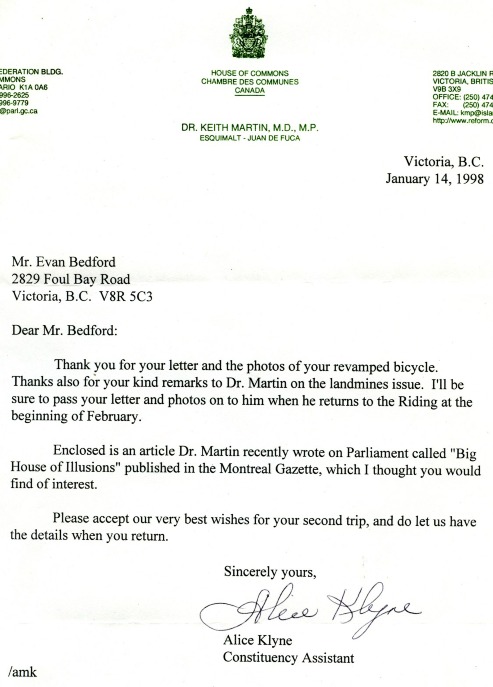
I also
stopped by
Steven Rosell's
office (the editor
and organizing
force behind the
Changing Maps
roundtable). He
was in the U.S.
at the time, but
his secretary
seemed elated to
hear what I had
just done
(though I wrote
a letter to Rosell
later on, and
didn't hear
back).
So I quickly
realized that the
venture had
come to naught.
I guess I
shouldn't have been surprised. The real key was media coverage, and I had precious little of that. Besides the interview on the highway outside of Brandon, I only had one other brush with the media. It was with a newspaper in Thunder Bay. I just went to the front desk and told them what I was doing and why I thought that some coverage would be great. A writer by the name of Ed interviewed me with enthusiasm, but when I checked back on a subsequent leg of the journey, I found out that he was no longer on staff.
Even the student newspaper back at the U. of A. proved fruitless.
Though I had previously written several columns for it when I was in grad school, the editor took one look at my submission and told me that it was "too much like an advertisement." I was livid. My submission was part book review and part travelogue. It was a 234
testimony to many weeks of shivering and sweat and drudgery and disappointment. To this day, I shake my head at the blindness and indifference. The Globe and Mail allowed me to write nearly ten column-inches praising the book, but The Gateway essentially told me to eff off.
calgary to medicine hat (april 1998)
I decided to give it another go. Not only would I put a bit more effort into getting media coverage, but I would also be able to make up the mileage I had missed from the north shore of Lake Superior.
But first I needed to take another look at the bike. The comfort that the recumbent brought was undeniable, and the third leg to Ottawa was done without a single ache or pain. But it was a heavier bike than the wedgie. So I worked on the only thing that was left: aerodynamics. And I reasoned that instead of bulbous panniers and a mountain of stuff on top of the rear rack, a streamlined container attached to the back of the seat would enable me to slip through the air considerably easier. And the container itself would have some type of message painted on it.
So I went to work with a bunch of 3-ply, 1/8" aircraft quality plywood. Perhaps not as light as carbon fibre or fibreglass, but it was cheap, and I had ample experience working with the stuff. I added in a bottle of carpenter’s glue and a fistful of wood screws, and soon came up with an elongated, pyramid that sprouted out from the rear of the seat.
I searched for a message, and I found two of them in the Globe and Mail. One was from the lead editorial of June 28th, 1997. And the other was from an article about the growing tendency toward autocracy13 by William Thorsell, who at the time was the editor in chief of the newspaper.
¹³ Autocracy in Action. Globe and Mail, September 27, 1997. p.D9
235
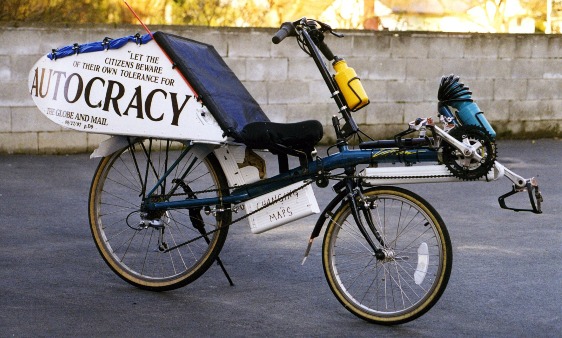
Autocracy in government. That was in the good ol' days, when a prime minister could wade into a crowd of protesters and attempt to strangle one of them.14 A few years later, we had an odd robotic character who looked like something out of a 1950's Brylcreem commercial. He never would have strangled a hamster, let alone a person. But in his own way, he was very much the autocrat. In fact, if you google Stephen Harper and "control freak", you get almost 10,000 hits.
Now we have a young hipster who wades into a crowd of protesters, not to strangle one of them, but to get a few selfies taken.
(Of course the crowd would be protesting some sort of social inequity; not the hipster’s broken promise on electoral reform.) But I digress…
So I loaded everything up and started out again...but this time from Calgary. I made a stop at the Calgary Herald, hoping for a bit of coverage. But after waiting for about a half hour in the lobby, I began to get itchy for the open road, and I left.
The trip was much like the third leg, but perhaps even a bit more sedate and comfortable. I had rigged up a small shortwave radio on the handlebar, so I could listen to the Beeb, Radio Canada and Voice ¹⁴ Chretien was almost poetic in his defense of his actions: "some people came my way... and I had to go, so if you're in my way...." From: http://en.wikipedia.org/wiki/Shawinigan_Handshake 236

of America as I pedalled along. This greatly alleviated the boredom during those stretches when the local programming was confined to country music, sports and mattress commercials.
A kind soul in Bassano let me set up the tent in his backyard. Or was it Brooks?
At a roadside restaurant just outside of Walsh, a rancher walked in and asked who had the weird looking bike outside. I hesitantly raised my hand, but he didn't say anything in response. And I couldn't figure out whether he was pissed off at the quotes on the box, or whether he was just mystified.
The rest of the trip was just a blur of endless miles of road shoulder and prairie grass. I camped under a bridge deck one night, and in a pasture next to a barbed wire fence the next (there didn't seem to be any cemeteries between Calgary and Moose Jaw). I took a photo of a 215 foot high steel teepee outside of Medicine Hat, and I took another of a 32 foot high fiberglass moose outside of Moose Jaw.15
¹⁵ …and during previous legs of the journey, a sasquatch smoking a cigar, a spider in a top hat, and Perry Mason on the side of a barn.
237
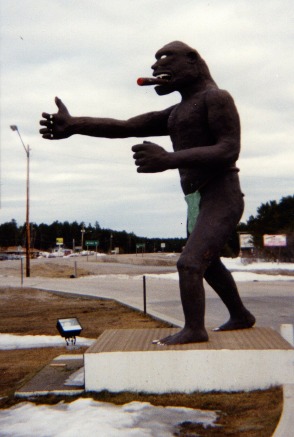
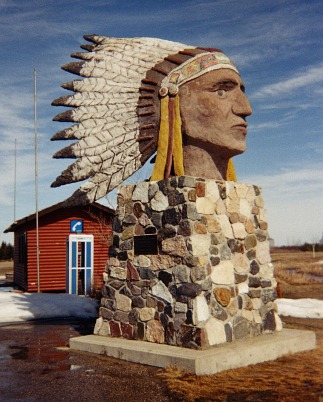
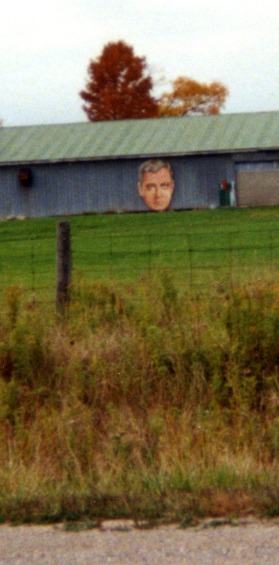
And then I got dispirited. I was getting nowhere. So I found another cardboard box and I packed up the bike and headed home.
238

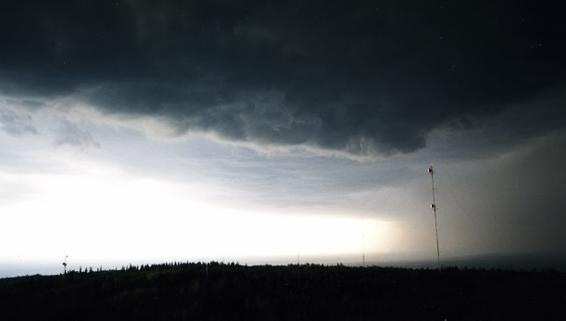
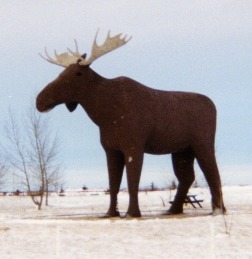
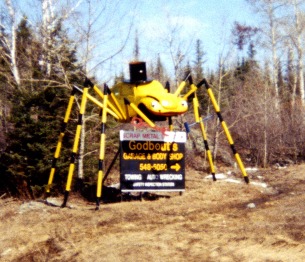
That summer on the tower, I wondered what I could do next to promote the book. And the thought occurred to me that if I did something crazy enough, the media would have no choice but to talk about it. Or at least mention the title a few times.
The tower was on a high point of land. All the better to see smokes pop up. But also on this high point of land were a number of cell towers. There were perhaps a half dozen of them around, with the nearest less than a 100 metres away. They were about the same height as my tower, so they made excellent targets. And I had Dad's old hunting rifle and scope.
I wouldn't even have to hit one. I'd just have to threaten to hit 239

one. Or I could just take off the corner of one of the parabolic dishes to show that I had the capacity to do some serious damage. I could bring a week's worth of food and water up into the cupola (or a month's), and I could easily jam the trap door shut. Feces and urine could just be thrown out a leeward window. The only way the law could stop me would be to either start firing up through the heavy plywood floor or to lob a few concussion grenades – neither a likely prospect against someone who wasn't threatening life or limb.
All I’d have to do would be to call up the local media and let them know what was going on. They'd be on it in a flash. I'd let them know that unless a copy of Changing Maps was delivered to Jean Chretien, I'd start doing some real damage. Or I could demand that a parliamentary committee be formed to study the recommendations of the book.
Of course, the real purpose would be to bring the themes of the book to wider audience. To let Jane and Joe six-pack know that they had the potential to get involved in the decision-making that affected their lives. And that they had a civic duty to be involved not only in the governance process, but also in the voluntary organizations that made society livable. And some idiot with a gun on top of a tower might be more effective for that than any number of parliamentary committees.
I had most of the summer to think about it. But when the end of the season came, I chickened out. What was I scared of? I suppose I was scared of losing whatever comfortable existence I had. But more than that, I was scared of the reactions of friends and family. They wouldn’t be angry; they’d just be “worried sick” (one of Mom’s favourite phrases).
That winter, I made up more leaflets with the book quotes on them. I put studded tires on the recumbent bike, and I pedaled around the U. of A. campus, handing them out. I pedaled up from behind, and when I was even with someone, I held out a leaflet and with a bit of exaggerated irony asked, "Can I give you some 240
propaganda?" Nobody ever declined, since they didn't have time to formulate some type of refusal in advance. But neither was I an extroverted salesman, so I never really got into any conversations with the students…except for a First Nations guy who stated that sustainability would only manifest itself when all of us immigrants went back to where we came from.
Then I came up with the idea to create a book contest. I offered up $1,000 to anyone who could come up with the best explanation for why any particular Canadian book was "important" for the new millennium. I formulated some criteria for judging, and I contacted the Alberta Writers' Guild, the Edmonton Public Library, and the Books columnist for the Edmonton Journal. There was a surprising amount of interest – though not from the bigger book stores in the city. The typical store manager would express mild curiosity and tentatively offer to help out...but then silence would ensue.
It might have been the complexity of the contest. I wanted readers to justify their choice of book based on a range of criteria, ranging from "...subject matter, scope and intrinsic or practical importance, to whether a book is descriptive or prescriptive."16 It all made sense to me, but the average reader might not have had the time to dissect a favourite book in such a way. And some potential judges might have simply wanted to skim a few glowing paragraphs from each submission, in order to pick out the catchiest prose.
Of course, the real reason for the contest was that I wanted to submit my nomination for Changing Maps. I had thought long and hard about why it had the potential to change the world, and from that, I formulated the criteria for the contest judging. Was that cheating? Was I giving my nomination an unfair chance at winning?
Perhaps. But the criteria were general in nature. And I wouldn’t have been doing the judging. A book by Marshall McLuhan or David Suzuki might have won the contest just as easily Due to lack of public interest, the contest died. In fact, I can't ¹⁶ Gordon Morash, Books & Authors columnist for the Edmonton Journal. March 28��, 1999. p. F7
241

even remember if it ever officially started. The now defunct Orlando Books (a small store catering to feminist and lesbian readers) carried brochures for a while, but that was it. And now all I have to remember it by are a couple of yellowing newspaper cuttings and a mug. Even the contest rules are lost in the mists of time (although they may be sitting in one of the obsolete hard drives that I occasionally toss into a box in our storage room).
So it became yet another dead end.
242

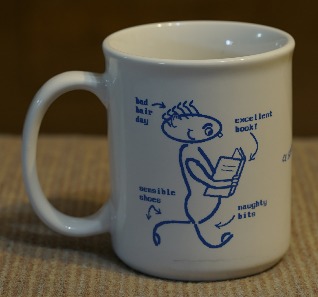

243

No shortage of dead ends. However, I can derive a bit of comfort from the Irish author, Samuel Beckett:
Ever tried. Ever failed.
No matter.
Try again. Fail again.
Fail better.
Maybe that’s why I’ve written this dumb book. Maybe that’s why I’m scouring the internet for information on velomobiles.17
Maybe that’s why I’m using Google Earth to see if the highway along Lake Superior looks any safer than it was deemed to be a few decades ago.18
All in all, it looks like 2024 (when I retire) will be a go. I’m 62
years old now, but I’m still healthy. One knee sometimes lets me know that I’m 62 years old, but only when I’m sitting still.
And most importantly, when I mentioned this to my wife, she didn’t have a fit. That’s a very good sign.
¹⁷ A recumbent that’s fully enclosed in an aerodynamic shroud (usually made from some combination of carbon fibre and/or fibreglass and/or kevlar). The aerodynamics are so good (drag coefficient of 0.1), that they make the revolutionary Mercedes EQS (with a drag coefficient of 0.2) look like a big ol’
brick.
¹⁸ Hmm. Much of it looks to be not too bad. Google Street View often shows stretches where the paved shoulder is likely less than a metre wide.
However, there is invariably a continuation of the shoulder in gravel for another two metres or so right next to it (therefore, at least somewhat safer looking than some of the stretches I recall between Kenora and Thunder Bay).
244
chapter xvi i: a woman
Part way through my second year of civil engineering, I applied for a summer job at the County. I would be surveying drainage ditches and stretching pneumatic rubber tubes across gravel roads in order to count traffic volumes. It would involve lots of outdoor work and a four day work-week…and decent pay. In other words, something close to paradise.
So one fine morning, I showed up at a rather drab looking building, where my new boss ushered me in. He found some time consuming work for me and the other tech student to do, and then he apologized. He had to take off for an hour or two to attend a funeral.
At the time, I had no inkling that it was the funeral of a fellow whose face I would get to know quite well. For within a couple of years, I would marry his widow.
I may have noticed her once or twice during that first month, but she likely didn't notice me. As she told me later, her mind was somewhat detached from her surroundings after the untimely death.
Plus, it was a big office with lots of people, and I was usually out slogging through ditches.
But at some point, I found myself sitting next to her in the coffee room, talking about lawn mowers. And she mentioned that her husband had recently died and that she wasn't very mechanically inclined and that she could probably use a man around the house.
Hmm. A few months later, I asked her out. But not in person. I e-mailed her.
Hmm. Maybe if the internet hadn't been invented, I might still be single.
After a few dates, I found out that one of her nephews and one of my nephews were best friends. A hundred miles to the south. In a city of a million people. Strange.
A few months later, at a church camp on the shore of an idyllic 245
lake, we wandered into one of the cabins,1 where she and her daughter were to stay the night. Before I left to go back to my tent, I noticed the profusion of young signatures scrawled on the ceiling and the roof joists. And there, in close proximity, was "Evan was Here" and "DENISE WUZ HERE".
Years later, she told me that that particular weekend on the lake was the turning point. She knew, even before we headed out there, that by the end of those couple of days, it would be evident whether or not we were compatible.
Our parents also bonded. Both couples were church-goers, extroverted and quick to share a story and a laugh.
But in many ways, Denise and I are polar opposites. I'm an introvert, who didn't particularly mind being totally isolated for months at a time on the towers. Denise, on the other hand, would find tower life to be the equivalent of one of Dante's circles of Hell.
Dante also wrote about the spheres of Heaven. For me, one of them must surely involve a pint of Guinness, while getting immersed in the 500-year-old Paston family letters. Denise would prefer the sphere which includes a glass of wine and a TV set tuned to either Dr. Pimple Popper or The Bachelor.
Dante’s third masterpiece takes place on Mount Purgatory, where I’d likely wind up on one of the lower terraces (my first instinct is to always think of myself). Denise meanwhile would already be on the summit (her thoughts and actions invariably seem to involve the welfare of others).
But even given all those differences, I note that we've been married for more than fifteen years, and I don't recall a single incident where either of us have raised our voice at the other. So I suppose we're doing something right.
¹ It might have even been the same cabin in which, forty years earlier, Dean and I and a bunch of other kids had horse-played around in. The same cabin in which Dean had tormented a bed-wetter so much that he slipped away at night and tried to hitch-hike back to the city.
246
